Rhetorical Analysis Sample Essay
Harriet Clark
Ms. Rebecca Winter
13 Feb. 2015
Not Quite a Clean Sweep: Rhetorical Strategies in
Grose's "Cleaning: The Final Feminist Frontier”
A woman’s work is never done: many American women grow up with this saying and feel it to be true. 1 One such woman, author Jessica Grose, wrote “Cleaning: The Final Feminist Frontier,” published in 2013 in the New Republic, 2 and she argues that while the men recently started taking on more of the childcare and cooking, cleaning still falls unfairly on women. 3 Grose begins building her credibility with personal facts and reputable sources, citing convincing facts and statistics, and successfully employing emotional appeals; however, toward the end of the article, her attempts to appeal to readers’ emotions weaken her credibility and ultimately, her argument. 4
In her article, Grose first sets the stage by describing a specific scenario of house-cleaning with her husband after being shut in during Hurricane Sandy, and then she outlines the uneven distribution of cleaning work in her marriage and draws a comparison to the larger feminist issue of who does the cleaning in a relationship. Grose continues by discussing some of the reasons that men do not contribute to cleaning: the praise for a clean house goes to the woman; advertising and media praise men’s cooking and childcare, but not cleaning; and lastly, it is just not fun. Possible solutions to the problem, Grose suggests, include making a chart of who does which chores, dividing up tasks based on skill and ability, accepting a dirtier home, and making cleaning more fun with gadgets. 5
Throughout her piece, Grose uses many strong sources that strengthen her credibility and appeal to ethos, as well as build her argument. 6 These sources include, “sociologists Judith Treas and Tsui-o Tai,” “a 2008 study from the University of New Hampshire,” and “P&G North America Fabric Care Brand Manager, Matthew Krehbiel” (qtd. in Grose). 7 Citing these sources boosts Grose’s credibility by showing that she has done her homework and has provided facts and statistics, as well as expert opinions to support her claim. She also uses personal examples from her own home life to introduce and support the issue, which shows that she has a personal stake in and first-hand experience with the problem. 8
Adding to her ethos appeals, Grose uses strong appeals to logos, with many facts and statistics and logical progressions of ideas. 9 She points out facts about her marriage and the distribution of household chores: “My husband and I both work. We split midnight baby feedings ...but ... he will admit that he’s never cleaned the bathroom, that I do the dishes nine times out of ten, and that he barely knows how the washer and dryer work in the apartment we’ve lived in for over eight months.” 10 These facts introduce and support the idea that Grose does more household chores than her husband. Grose continues with many statistics:
[A]bout 55 percent of American mothers employed full time do some housework on an average day, while only 18 percent of employed fathers do. ... [W]orking women with children are still doing a week and a half more of “second shift” work each year than their male partners. ... Even in the famously gender-neutral Sweden, women do 45 minutes more housework a day than their male partners. 11
These statistics are a few of many that logically support her claim that it is a substantial and real problem that men do not do their fair share of the chores. The details and numbers build an appeal to logos and impress upon the reader that this is a problem worth discussing. 12
Along with strong logos appeals, Grose effectively makes appeals to pathos in the beginning and middle sections. 13 Her introduction is full of emotionally-charged words and phrases that create a sympathetic image; Grose notes that she “was eight months pregnant” and her husband found it difficult to “fight with a massively pregnant person.” 14 The image she evokes of the challenges and vulnerabilities of being so pregnant, as well as the high emotions a woman feels at that time effectively introduce the argument and its seriousness. Her goal is to make the reader feel sympathy for her. Adding to this idea are words and phrases such as, “insisted,” “argued,” “not fun,” “sucks” “headachey,” “be judged,” “be shunned” (Grose). All of these words evoke negative emotions about cleaning, which makes the reader sympathize with women who feel “judged” and shunned”—very negative feelings. Another feeling Grose reinforces with her word choice is the concept of fairness: “fair share,” “a week and a half more of ‘second shift’ work,” “more housework,” “more gendered and less frequent.” These words help establish the unfairness that exists when women do all of the cleaning, and they are an appeal to pathos, or the readers’ feelings of frustration and anger with injustice. 15
However, the end of the article lacks the same level of effectiveness in the appeals to ethos. 16 For example, Grose notes that when men do housework, they are considered to be “’enacting “small instances of gender heroism,” or ‘SIGH’s’—which, barf.” 17 The usage of the word “barf” is jarring to the reader; unprofessional and immature, it is a shift from the researched, intelligent voice she has established and the reader is less likely to take the author seriously. This damages the strength of her credibility and her argument. 18
Additionally, her last statement in the article refers to her husband in a way that weakens the argument. 19 While returning to the introduction’s hook in the conclusion is a frequently-used strategy, Grose chooses to return to her discussion of her husband in a humorous way: Grose discusses solutions, and says there is “a huge, untapped market ... for toilet-scrubbing iPods. I bet my husband would buy one.” 20 Returning to her own marriage and husband is an appeal to ethos or personal credibility, and while that works well in the introduction, in the conclusion, it lacks the strength and seriousness that the topic deserves and was given earlier in the article. 21
Though Grose begins the essay by effectively persuading her readers of the unfair distribution of home-maintenance cleaning labor, she loses her power in the end, where she most needs to drive home her argument. Readers can see the problem exists in both her marriage and throughout the world; however, her shift to humor and sarcasm makes the reader not take the problem as seriously in the end. 22 Grose could have more seriously driven home the point that a woman’s work could be done: by a man. 23
Works Cited
Grose, Jessica. “Cleaning: The Final Feminist Frontier.” New Republic. The New Republic, 19 Mar. 2013. Web. 28 Mar. 2014.
- Article author's claim or purpose
- Summary of the article's main point in the second paragraph (could also be in the introduction)
- Third paragraph begins with a transition and topic sentence that reflects the first topic in the thesis
- Quotes illustrate how the author uses appeals to ethos
- Analysis explains how the quotes show the effective use of ethos as noted in the thesis
- Transition and topic sentence about the second point from the thesis
- Quote that illustrates appeals to logos
- Analysis explains how the quotes show the effective use of logos, as noted in the thesis
- Transition and topic sentence about the third point from the thesis
- Quotes that illustrate appeals to pathos
- Analysis explains how the quotes show the effective use of pathos, as noted in the thesis
- Transition and topic sentence about fourth point from the thesis
- Quote illustrates how the author uses appeal to ethos
- Analysis explains how quote supports thesis
- Transition and topic sentence about fourth point from thesis
- Conclusion returns to the ideas in the thesis and further develops them
- Last sentence returns to the hook in the introduction
Learn more about the " Rhetorical Analysis Graphic Organizer ."
Learn more about " Pathos, Logos, and Ethos ."

Have a language expert improve your writing
Run a free plagiarism check in 10 minutes, generate accurate citations for free.
- Knowledge Base
- How to write a rhetorical analysis | Key concepts & examples
How to Write a Rhetorical Analysis | Key Concepts & Examples
Published on August 28, 2020 by Jack Caulfield . Revised on July 23, 2023.
A rhetorical analysis is a type of essay that looks at a text in terms of rhetoric. This means it is less concerned with what the author is saying than with how they say it: their goals, techniques, and appeals to the audience.
Instantly correct all language mistakes in your text
Upload your document to correct all your mistakes in minutes

Table of contents
Key concepts in rhetoric, analyzing the text, introducing your rhetorical analysis, the body: doing the analysis, concluding a rhetorical analysis, other interesting articles, frequently asked questions about rhetorical analysis.
Rhetoric, the art of effective speaking and writing, is a subject that trains you to look at texts, arguments and speeches in terms of how they are designed to persuade the audience. This section introduces a few of the key concepts of this field.
Appeals: Logos, ethos, pathos
Appeals are how the author convinces their audience. Three central appeals are discussed in rhetoric, established by the philosopher Aristotle and sometimes called the rhetorical triangle: logos, ethos, and pathos.
Logos , or the logical appeal, refers to the use of reasoned argument to persuade. This is the dominant approach in academic writing , where arguments are built up using reasoning and evidence.
Ethos , or the ethical appeal, involves the author presenting themselves as an authority on their subject. For example, someone making a moral argument might highlight their own morally admirable behavior; someone speaking about a technical subject might present themselves as an expert by mentioning their qualifications.
Pathos , or the pathetic appeal, evokes the audience’s emotions. This might involve speaking in a passionate way, employing vivid imagery, or trying to provoke anger, sympathy, or any other emotional response in the audience.
These three appeals are all treated as integral parts of rhetoric, and a given author may combine all three of them to convince their audience.
Text and context
In rhetoric, a text is not necessarily a piece of writing (though it may be this). A text is whatever piece of communication you are analyzing. This could be, for example, a speech, an advertisement, or a satirical image.
In these cases, your analysis would focus on more than just language—you might look at visual or sonic elements of the text too.
The context is everything surrounding the text: Who is the author (or speaker, designer, etc.)? Who is their (intended or actual) audience? When and where was the text produced, and for what purpose?
Looking at the context can help to inform your rhetorical analysis. For example, Martin Luther King, Jr.’s “I Have a Dream” speech has universal power, but the context of the civil rights movement is an important part of understanding why.
Claims, supports, and warrants
A piece of rhetoric is always making some sort of argument, whether it’s a very clearly defined and logical one (e.g. in a philosophy essay) or one that the reader has to infer (e.g. in a satirical article). These arguments are built up with claims, supports, and warrants.
A claim is the fact or idea the author wants to convince the reader of. An argument might center on a single claim, or be built up out of many. Claims are usually explicitly stated, but they may also just be implied in some kinds of text.
The author uses supports to back up each claim they make. These might range from hard evidence to emotional appeals—anything that is used to convince the reader to accept a claim.
The warrant is the logic or assumption that connects a support with a claim. Outside of quite formal argumentation, the warrant is often unstated—the author assumes their audience will understand the connection without it. But that doesn’t mean you can’t still explore the implicit warrant in these cases.
For example, look at the following statement:
We can see a claim and a support here, but the warrant is implicit. Here, the warrant is the assumption that more likeable candidates would have inspired greater turnout. We might be more or less convinced by the argument depending on whether we think this is a fair assumption.
Receive feedback on language, structure, and formatting
Professional editors proofread and edit your paper by focusing on:
- Academic style
- Vague sentences
- Style consistency
See an example

Rhetorical analysis isn’t a matter of choosing concepts in advance and applying them to a text. Instead, it starts with looking at the text in detail and asking the appropriate questions about how it works:
- What is the author’s purpose?
- Do they focus closely on their key claims, or do they discuss various topics?
- What tone do they take—angry or sympathetic? Personal or authoritative? Formal or informal?
- Who seems to be the intended audience? Is this audience likely to be successfully reached and convinced?
- What kinds of evidence are presented?
By asking these questions, you’ll discover the various rhetorical devices the text uses. Don’t feel that you have to cram in every rhetorical term you know—focus on those that are most important to the text.
The following sections show how to write the different parts of a rhetorical analysis.
Like all essays, a rhetorical analysis begins with an introduction . The introduction tells readers what text you’ll be discussing, provides relevant background information, and presents your thesis statement .
Hover over different parts of the example below to see how an introduction works.
Martin Luther King, Jr.’s “I Have a Dream” speech is widely regarded as one of the most important pieces of oratory in American history. Delivered in 1963 to thousands of civil rights activists outside the Lincoln Memorial in Washington, D.C., the speech has come to symbolize the spirit of the civil rights movement and even to function as a major part of the American national myth. This rhetorical analysis argues that King’s assumption of the prophetic voice, amplified by the historic size of his audience, creates a powerful sense of ethos that has retained its inspirational power over the years.
The body of your rhetorical analysis is where you’ll tackle the text directly. It’s often divided into three paragraphs, although it may be more in a longer essay.
Each paragraph should focus on a different element of the text, and they should all contribute to your overall argument for your thesis statement.
Hover over the example to explore how a typical body paragraph is constructed.
King’s speech is infused with prophetic language throughout. Even before the famous “dream” part of the speech, King’s language consistently strikes a prophetic tone. He refers to the Lincoln Memorial as a “hallowed spot” and speaks of rising “from the dark and desolate valley of segregation” to “make justice a reality for all of God’s children.” The assumption of this prophetic voice constitutes the text’s strongest ethical appeal; after linking himself with political figures like Lincoln and the Founding Fathers, King’s ethos adopts a distinctly religious tone, recalling Biblical prophets and preachers of change from across history. This adds significant force to his words; standing before an audience of hundreds of thousands, he states not just what the future should be, but what it will be: “The whirlwinds of revolt will continue to shake the foundations of our nation until the bright day of justice emerges.” This warning is almost apocalyptic in tone, though it concludes with the positive image of the “bright day of justice.” The power of King’s rhetoric thus stems not only from the pathos of his vision of a brighter future, but from the ethos of the prophetic voice he adopts in expressing this vision.
Prevent plagiarism. Run a free check.
The conclusion of a rhetorical analysis wraps up the essay by restating the main argument and showing how it has been developed by your analysis. It may also try to link the text, and your analysis of it, with broader concerns.
Explore the example below to get a sense of the conclusion.
It is clear from this analysis that the effectiveness of King’s rhetoric stems less from the pathetic appeal of his utopian “dream” than it does from the ethos he carefully constructs to give force to his statements. By framing contemporary upheavals as part of a prophecy whose fulfillment will result in the better future he imagines, King ensures not only the effectiveness of his words in the moment but their continuing resonance today. Even if we have not yet achieved King’s dream, we cannot deny the role his words played in setting us on the path toward it.
If you want to know more about AI tools , college essays , or fallacies make sure to check out some of our other articles with explanations and examples or go directly to our tools!
- Ad hominem fallacy
- Post hoc fallacy
- Appeal to authority fallacy
- False cause fallacy
- Sunk cost fallacy
College essays
- Choosing Essay Topic
- Write a College Essay
- Write a Diversity Essay
- College Essay Format & Structure
- Comparing and Contrasting in an Essay
(AI) Tools
- Grammar Checker
- Paraphrasing Tool
- Text Summarizer
- AI Detector
- Plagiarism Checker
- Citation Generator
The goal of a rhetorical analysis is to explain the effect a piece of writing or oratory has on its audience, how successful it is, and the devices and appeals it uses to achieve its goals.
Unlike a standard argumentative essay , it’s less about taking a position on the arguments presented, and more about exploring how they are constructed.
The term “text” in a rhetorical analysis essay refers to whatever object you’re analyzing. It’s frequently a piece of writing or a speech, but it doesn’t have to be. For example, you could also treat an advertisement or political cartoon as a text.
Logos appeals to the audience’s reason, building up logical arguments . Ethos appeals to the speaker’s status or authority, making the audience more likely to trust them. Pathos appeals to the emotions, trying to make the audience feel angry or sympathetic, for example.
Collectively, these three appeals are sometimes called the rhetorical triangle . They are central to rhetorical analysis , though a piece of rhetoric might not necessarily use all of them.
In rhetorical analysis , a claim is something the author wants the audience to believe. A support is the evidence or appeal they use to convince the reader to believe the claim. A warrant is the (often implicit) assumption that links the support with the claim.
Cite this Scribbr article
If you want to cite this source, you can copy and paste the citation or click the “Cite this Scribbr article” button to automatically add the citation to our free Citation Generator.
Caulfield, J. (2023, July 23). How to Write a Rhetorical Analysis | Key Concepts & Examples. Scribbr. Retrieved August 19, 2024, from https://www.scribbr.com/academic-essay/rhetorical-analysis/
Is this article helpful?

Jack Caulfield
Other students also liked, how to write an argumentative essay | examples & tips, how to write a literary analysis essay | a step-by-step guide, comparing and contrasting in an essay | tips & examples, get unlimited documents corrected.
✔ Free APA citation check included ✔ Unlimited document corrections ✔ Specialized in correcting academic texts
- Affiliate Program

- UNITED STATES
- 台灣 (TAIWAN)
- TÜRKIYE (TURKEY)
- Academic Editing Services
- - Research Paper
- - Journal Manuscript
- - Dissertation
- - College & University Assignments
- Admissions Editing Services
- - Application Essay
- - Personal Statement
- - Recommendation Letter
- - Cover Letter
- - CV/Resume
- Business Editing Services
- - Business Documents
- - Report & Brochure
- - Website & Blog
- Writer Editing Services
- - Script & Screenplay
- Our Editors
- Client Reviews
- Editing & Proofreading Prices
- Wordvice Points
- Partner Discount
- Plagiarism Checker
- APA Citation Generator
- MLA Citation Generator
- Chicago Citation Generator
- Vancouver Citation Generator
- - APA Style
- - MLA Style
- - Chicago Style
- - Vancouver Style
- Writing & Editing Guide
- Academic Resources
- Admissions Resources
How to Write a Rhetorical Analysis Essay–Examples & Template
What is a Rhetorical Analysis Essay?
A rhetorical analysis essay is, as the name suggests, an analysis of someone else’s writing (or speech, or advert, or even cartoon) and how they use not only words but also rhetorical techniques to influence their audience in a certain way. A rhetorical analysis is less interested in what the author is saying and more in how they present it, what effect this has on their readers, whether they achieve their goals, and what approach they use to get there.
Its structure is similar to that of most essays: An Introduction presents your thesis, a Body analyzes the text you have chosen, breaks it down into sections and explains how arguments have been constructed and how each part persuades, informs, or entertains the reader, and a Conclusion section sums up your evaluation.
Note that your personal opinion on the matter is not relevant for your analysis and that you don’t state anywhere in your essay whether you agree or disagree with the stance the author takes.
In the following, we will define the key rhetorical concepts you need to write a good rhetorical analysis and give you some practical tips on where to start.
Key Rhetorical Concepts
Your goal when writing a rhetorical analysis is to think about and then carefully describe how the author has designed their text so that it has the intended effect on their audience. To do that, you need to consider a number of key rhetorical strategies: Rhetorical appeals (“Ethos”, “Logos”, and “Pathos”), context, as well as claims, supports, and warrants.
Ethos, Logos, and Pathos were introduced by Aristotle, way back in the 4th century BC, as the main ways in which language can be used to persuade an audience. They still represent the basis of any rhetorical analysis and are often referred to as the “rhetorical triangle”.
These and other rhetorical techniques can all be combined to create the intended effect, and your job as the one analyzing a text is to break the writer’s arguments down and identify the concepts they are based on.
Rhetorical Appeals
Rhetorical appeal #1: ethos.
Ethos refers to the reputation or authority of the writer regarding the topic of their essay or speech and to how they use this to appeal to their audience. Just like we are more likely to buy a product from a brand or vendor we have confidence in than one we don’t know or have reason to distrust, Ethos-driven texts or speeches rely on the reputation of the author to persuade the reader or listener. When you analyze an essay, you should therefore look at how the writer establishes Ethos through rhetorical devices.
Does the author present themselves as an authority on their subject? If so, how?
Do they highlight how impeccable their own behavior is to make a moral argument?
Do they present themselves as an expert by listing their qualifications or experience to convince the reader of their opinion on something?
Rhetorical appeal #2: Pathos
The purpose of Pathos-driven rhetoric is to appeal to the reader’s emotions. A common example of pathos as a rhetorical means is adverts by charities that try to make you donate money to a “good cause”. To evoke the intended emotions in the reader, an author may use passionate language, tell personal stories, and employ vivid imagery so that the reader can imagine themselves in a certain situation and feel empathy with or anger towards others.
Rhetorical appeal #3: Logos
Logos, the “logical” appeal, uses reason to persuade. Reason and logic, supported by data, evidence, clearly defined methodology, and well-constructed arguments, are what most academic writing is based on. Emotions, those of the researcher/writer as well as those of the reader, should stay out of such academic texts, as should anyone’s reputation, beliefs, or personal opinions.
Text and Context
To analyze a piece of writing, a speech, an advertisement, or even a satirical drawing, you need to look beyond the piece of communication and take the context in which it was created and/or published into account.
Who is the person who wrote the text/drew the cartoon/designed the ad..? What audience are they trying to reach? Where was the piece published and what was happening there around that time?
A political speech, for example, can be powerful even when read decades later, but the historical context surrounding it is an important aspect of the effect it was intended to have.
Claims, Supports, and Warrants
To make any kind of argument, a writer needs to put forward specific claims, support them with data or evidence or even a moral or emotional appeal, and connect the dots logically so that the reader can follow along and agree with the points made.
The connections between statements, so-called “warrants”, follow logical reasoning but are not always clearly stated—the author simply assumes the reader understands the underlying logic, whether they present it “explicitly” or “implicitly”. Implicit warrants are commonly used in advertisements where seemingly happy people use certain products, wear certain clothes, accessories, or perfumes, or live certain lifestyles – with the connotation that, first, the product/perfume/lifestyle is what makes that person happy and, second, the reader wants to be as happy as the person in the ad. Some warrants are never clearly stated, and your job when writing a rhetorical analysis essay is therefore to identify them and bring them to light, to evaluate their validity, their effect on the reader, and the use of such means by the writer/creator.

What are the Five Rhetorical Situations?
A “rhetorical situation” refers to the circumstance behind a text or other piece of communication that arises from a given context. It explains why a rhetorical piece was created, what its purpose is, and how it was constructed to achieve its aims.
Rhetorical situations can be classified into the following five categories:
| Why was a text written or a cartoon drawn? Does it want to inform someone? Instruct a certain audience? Entertain a specific group of people? | |
| Who will read/see this (or read/saw it in the past) and be influenced by it/motivated to do something? | |
| What type of writing/advertisement/communication is this? | |
| What views does the piece represent? How do these views fit into the situation the writer was in at the time or the reader is in now? | |
| What forms, means, and techniques does the piece use to communicate with its audience? |
Asking such questions when you analyze a text will help you identify all the aspects that play a role in the effect it has on its audience, and will allow you to evaluate whether it achieved its aims or where it may have failed to do so.
Rhetorical Analysis Essay Outline
Analyzing someone else’s work can seem like a big task, but as with every assignment or writing endeavor, you can break it down into smaller, well-defined steps that give you a practical structure to follow.
To give you an example of how the different parts of your text may look when it’s finished, we will provide you with some excerpts from this rhetorical analysis essay example (which even includes helpful comments) published on the Online Writing Lab website of Excelsior University in Albany, NY. The text that this essay analyzes is this article on why one should or shouldn’t buy an Ipad. If you want more examples so that you can build your own rhetorical analysis template, have a look at this essay on Nabokov’s Lolita and the one provided here about the “Shitty First Drafts” chapter of Anne Lamott’s writing instruction book “Bird by Bird”.
Analyzing the Text
When writing a rhetorical analysis, you don’t choose the concepts or key points you think are relevant or want to address. Rather, you carefully read the text several times asking yourself questions like those listed in the last section on rhetorical situations to identify how the text “works” and how it was written to achieve that effect.
Start with focusing on the author : What do you think was their purpose for writing the text? Do they make one principal claim and then elaborate on that? Or do they discuss different topics?
Then look at what audience they are talking to: Do they want to make a group of people take some action? Vote for someone? Donate money to a good cause? Who are these people? Is the text reaching this specific audience? Why or why not?
What tone is the author using to address their audience? Are they trying to evoke sympathy? Stir up anger? Are they writing from a personal perspective? Are they painting themselves as an authority on the topic? Are they using academic or informal language?
How does the author support their claims ? What kind of evidence are they presenting? Are they providing explicit or implicit warrants? Are these warrants valid or problematic? Is the provided evidence convincing?
Asking yourself such questions will help you identify what rhetorical devices a text uses and how well they are put together to achieve a certain aim. Remember, your own opinion and whether you agree with the author are not the point of a rhetorical analysis essay – your task is simply to take the text apart and evaluate it.
If you are still confused about how to write a rhetorical analysis essay, just follow the steps outlined below to write the different parts of your rhetorical analysis: As every other essay, it consists of an Introduction , a Body (the actual analysis), and a Conclusion .
Rhetorical Analysis Introduction
The Introduction section briefly presents the topic of the essay you are analyzing, the author, their main claims, a short summary of the work by you, and your thesis statement .
Tell the reader what the text you are going to analyze represents (e.g., historically) or why it is relevant (e.g., because it has become some kind of reference for how something is done). Describe what the author claims, asserts, or implies and what techniques they use to make their argument and persuade their audience. Finish off with your thesis statement that prepares the reader for what you are going to present in the next section – do you think that the author’s assumptions/claims/arguments were presented in a logical/appealing/powerful way and reached their audience as intended?
Have a look at an excerpt from the sample essay linked above to see what a rhetorical analysis introduction can look like. See how it introduces the author and article , the context in which it originally appeared , the main claims the author makes , and how this first paragraph ends in a clear thesis statement that the essay will then elaborate on in the following Body section:
Cory Doctorow ’s article on BoingBoing is an older review of the iPad , one of Apple’s most famous products. At the time of this article, however, the iPad was simply the latest Apple product to hit the market and was not yet so popular. Doctorow’s entire career has been entrenched in and around technology. He got his start as a CD-ROM programmer and is now a successful blogger and author. He is currently the co-editor of the BoingBoing blog on which this article was posted. One of his main points in this article comes from Doctorow’s passionate advocacy of free digital media sharing. He argues that the iPad is just another way for established technology companies to control our technological freedom and creativity . In “ Why I Won’t Buy an iPad (and Think You Shouldn’t, Either) ” published on Boing Boing in April of 2010, Cory Doctorow successfully uses his experience with technology, facts about the company Apple, and appeals to consumer needs to convince potential iPad buyers that Apple and its products, specifically the iPad, limit the digital rights of those who use them by controlling and mainstreaming the content that can be used and created on the device .
Doing the Rhetorical Analysis
The main part of your analysis is the Body , where you dissect the text in detail. Explain what methods the author uses to inform, entertain, and/or persuade the audience. Use Aristotle’s rhetorical triangle and the other key concepts we introduced above. Use quotations from the essay to demonstrate what you mean. Work out why the writer used a certain approach and evaluate (and again, demonstrate using the text itself) how successful they were. Evaluate the effect of each rhetorical technique you identify on the audience and judge whether the effect is in line with the author’s intentions.
To make it easy for the reader to follow your thought process, divide this part of your essay into paragraphs that each focus on one strategy or one concept , and make sure they are all necessary and contribute to the development of your argument(s).
One paragraph of this section of your essay could, for example, look like this:
One example of Doctorow’s position is his comparison of Apple’s iStore to Wal-Mart. This is an appeal to the consumer’s logic—or an appeal to logos. Doctorow wants the reader to take his comparison and consider how an all-powerful corporation like the iStore will affect them. An iPad will only allow for apps and programs purchased through the iStore to be run on it; therefore, a customer must not only purchase an iPad but also any programs he or she wishes to use. Customers cannot create their own programs or modify the hardware in any way.
As you can see, the author of this sample essay identifies and then explains to the reader how Doctorow uses the concept of Logos to appeal to his readers – not just by pointing out that he does it but by dissecting how it is done.
Rhetorical Analysis Conclusion
The conclusion section of your analysis should restate your main arguments and emphasize once more whether you think the author achieved their goal. Note that this is not the place to introduce new information—only rely on the points you have discussed in the body of your essay. End with a statement that sums up the impact the text has on its audience and maybe society as a whole:
Overall, Doctorow makes a good argument about why there are potentially many better things to drop a great deal of money on instead of the iPad. He gives some valuable information and facts that consumers should take into consideration before going out to purchase the new device. He clearly uses rhetorical tools to help make his case, and, overall, he is effective as a writer, even if, ultimately, he was ineffective in convincing the world not to buy an iPad .
Frequently Asked Questions about Rhetorical Analysis Essays
What is a rhetorical analysis essay.
A rhetorical analysis dissects a text or another piece of communication to work out and explain how it impacts its audience, how successfully it achieves its aims, and what rhetorical devices it uses to do that.
While argumentative essays usually take a stance on a certain topic and argue for it, a rhetorical analysis identifies how someone else constructs their arguments and supports their claims.
What is the correct rhetorical analysis essay format?
Like most other essays, a rhetorical analysis contains an Introduction that presents the thesis statement, a Body that analyzes the piece of communication, explains how arguments have been constructed, and illustrates how each part persuades, informs, or entertains the reader, and a Conclusion section that summarizes the results of the analysis.
What is the “rhetorical triangle”?
The rhetorical triangle was introduced by Aristotle as the main ways in which language can be used to persuade an audience: Logos appeals to the audience’s reason, Ethos to the writer’s status or authority, and Pathos to the reader’s emotions. Logos, Ethos, and Pathos can all be combined to create the intended effect, and your job as the one analyzing a text is to break the writer’s arguments down and identify what specific concepts each is based on.
Let Wordvice help you write a flawless rhetorical analysis essay!
Whether you have to write a rhetorical analysis essay as an assignment or whether it is part of an application, our professional proofreading services feature professional editors are trained subject experts that make sure your text is in line with the required format, as well as help you improve the flow and expression of your writing. Let them be your second pair of eyes so that after receiving paper editing services or essay editing services from Wordvice, you can submit your manuscript or apply to the school of your dreams with confidence.
And check out our editing services for writers (including blog editing , script editing , and book editing ) to correct your important personal or business-related work.
- Grammar Checker
- Paraphrasing Tool
- Critique Report
- Writing Reports
- Learn Blog Grammar Guide Community Events FAQ
- Grammar Guide
What Is a Rhetorical Analysis and How to Write a Great One

By Helly Douglas

Do you have to write a rhetorical analysis essay? Fear not! We’re here to explain exactly what rhetorical analysis means, how you should structure your essay, and give you some essential “dos and don’ts.”
What is a Rhetorical Analysis Essay?
How do you write a rhetorical analysis, what are the three rhetorical strategies, what are the five rhetorical situations, how to plan a rhetorical analysis essay, creating a rhetorical analysis essay, examples of great rhetorical analysis essays, final thoughts.
A rhetorical analysis essay studies how writers and speakers have used words to influence their audience. Think less about the words the author has used and more about the techniques they employ, their goals, and the effect this has on the audience.

In your analysis essay, you break a piece of text (including cartoons, adverts, and speeches) into sections and explain how each part works to persuade, inform, or entertain. You’ll explore the effectiveness of the techniques used, how the argument has been constructed, and give examples from the text.
A strong rhetorical analysis evaluates a text rather than just describes the techniques used. You don’t include whether you personally agree or disagree with the argument.
Structure a rhetorical analysis in the same way as most other types of academic essays . You’ll have an introduction to present your thesis, a main body where you analyze the text, which then leads to a conclusion.
Think about how the writer (also known as a rhetor) considers the situation that frames their communication:
- Topic: the overall purpose of the rhetoric
- Audience: this includes primary, secondary, and tertiary audiences
- Purpose: there are often more than one to consider
- Context and culture: the wider situation within which the rhetoric is placed
Back in the 4th century BC, Aristotle was talking about how language can be used as a means of persuasion. He described three principal forms —Ethos, Logos, and Pathos—often referred to as the Rhetorical Triangle . These persuasive techniques are still used today.

Rhetorical Strategy 1: Ethos
Are you more likely to buy a car from an established company that’s been an important part of your community for 50 years, or someone new who just started their business?
Reputation matters. Ethos explores how the character, disposition, and fundamental values of the author create appeal, along with their expertise and knowledge in the subject area.
Aristotle breaks ethos down into three further categories:
- Phronesis: skills and practical wisdom
- Arete: virtue
- Eunoia: goodwill towards the audience
Ethos-driven speeches and text rely on the reputation of the author. In your analysis, you can look at how the writer establishes ethos through both direct and indirect means.
Rhetorical Strategy 2: Pathos
Pathos-driven rhetoric hooks into our emotions. You’ll often see it used in advertisements, particularly by charities wanting you to donate money towards an appeal.
Common use of pathos includes:
- Vivid description so the reader can imagine themselves in the situation
- Personal stories to create feelings of empathy
- Emotional vocabulary that evokes a response
By using pathos to make the audience feel a particular emotion, the author can persuade them that the argument they’re making is compelling.
Rhetorical Strategy 3: Logos
Logos uses logic or reason. It’s commonly used in academic writing when arguments are created using evidence and reasoning rather than an emotional response. It’s constructed in a step-by-step approach that builds methodically to create a powerful effect upon the reader.
Rhetoric can use any one of these three techniques, but effective arguments often appeal to all three elements.
The rhetorical situation explains the circumstances behind and around a piece of rhetoric. It helps you think about why a text exists, its purpose, and how it’s carried out.

The rhetorical situations are:
- 1) Purpose: Why is this being written? (It could be trying to inform, persuade, instruct, or entertain.)
- 2) Audience: Which groups or individuals will read and take action (or have done so in the past)?
- 3) Genre: What type of writing is this?
- 4) Stance: What is the tone of the text? What position are they taking?
- 5) Media/Visuals: What means of communication are used?
Understanding and analyzing the rhetorical situation is essential for building a strong essay. Also think about any rhetoric restraints on the text, such as beliefs, attitudes, and traditions that could affect the author's decisions.
Before leaping into your essay, it’s worth taking time to explore the text at a deeper level and considering the rhetorical situations we looked at before. Throw away your assumptions and use these simple questions to help you unpick how and why the text is having an effect on the audience.

1: What is the Rhetorical Situation?
- Why is there a need or opportunity for persuasion?
- How do words and references help you identify the time and location?
- What are the rhetoric restraints?
- What historical occasions would lead to this text being created?
2: Who is the Author?
- How do they position themselves as an expert worth listening to?
- What is their ethos?
- Do they have a reputation that gives them authority?
- What is their intention?
- What values or customs do they have?
3: Who is it Written For?
- Who is the intended audience?
- How is this appealing to this particular audience?
- Who are the possible secondary and tertiary audiences?
4: What is the Central Idea?
- Can you summarize the key point of this rhetoric?
- What arguments are used?
- How has it developed a line of reasoning?
5: How is it Structured?
- What structure is used?
- How is the content arranged within the structure?
6: What Form is Used?
- Does this follow a specific literary genre?
- What type of style and tone is used, and why is this?
- Does the form used complement the content?
- What effect could this form have on the audience?
7: Is the Rhetoric Effective?
- Does the content fulfil the author’s intentions?
- Does the message effectively fit the audience, location, and time period?
Once you’ve fully explored the text, you’ll have a better understanding of the impact it’s having on the audience and feel more confident about writing your essay outline.
A great essay starts with an interesting topic. Choose carefully so you’re personally invested in the subject and familiar with it rather than just following trending topics. There are lots of great ideas on this blog post by My Perfect Words if you need some inspiration. Take some time to do background research to ensure your topic offers good analysis opportunities.

Remember to check the information given to you by your professor so you follow their preferred style guidelines. This outline example gives you a general idea of a format to follow, but there will likely be specific requests about layout and content in your course handbook. It’s always worth asking your institution if you’re unsure.
Make notes for each section of your essay before you write. This makes it easy for you to write a well-structured text that flows naturally to a conclusion. You will develop each note into a paragraph. Look at this example by College Essay for useful ideas about the structure.

1: Introduction
This is a short, informative section that shows you understand the purpose of the text. It tempts the reader to find out more by mentioning what will come in the main body of your essay.
- Name the author of the text and the title of their work followed by the date in parentheses
- Use a verb to describe what the author does, e.g. “implies,” “asserts,” or “claims”
- Briefly summarize the text in your own words
- Mention the persuasive techniques used by the rhetor and its effect
Create a thesis statement to come at the end of your introduction.
After your introduction, move on to your critical analysis. This is the principal part of your essay.
- Explain the methods used by the author to inform, entertain, and/or persuade the audience using Aristotle's rhetorical triangle
- Use quotations to prove the statements you make
- Explain why the writer used this approach and how successful it is
- Consider how it makes the audience feel and react
Make each strategy a new paragraph rather than cramming them together, and always use proper citations. Check back to your course handbook if you’re unsure which citation style is preferred.
3: Conclusion
Your conclusion should summarize the points you’ve made in the main body of your essay. While you will draw the points together, this is not the place to introduce new information you’ve not previously mentioned.
Use your last sentence to share a powerful concluding statement that talks about the impact the text has on the audience(s) and wider society. How have its strategies helped to shape history?
Before You Submit
Poor spelling and grammatical errors ruin a great essay. Use ProWritingAid to check through your finished essay before you submit. It will pick up all the minor errors you’ve missed and help you give your essay a final polish. Look at this useful ProWritingAid webinar for further ideas to help you significantly improve your essays. Sign up for a free trial today and start editing your essays!

You’ll find countless examples of rhetorical analysis online, but they range widely in quality. Your institution may have example essays they can share with you to show you exactly what they’re looking for.
The following links should give you a good starting point if you’re looking for ideas:
Pearson Canada has a range of good examples. Look at how embedded quotations are used to prove the points being made. The end questions help you unpick how successful each essay is.
Excelsior College has an excellent sample essay complete with useful comments highlighting the techniques used.
Brighton Online has a selection of interesting essays to look at. In this specific example, consider how wider reading has deepened the exploration of the text.

Writing a rhetorical analysis essay can seem daunting, but spending significant time deeply analyzing the text before you write will make it far more achievable and result in a better-quality essay overall.
It can take some time to write a good essay. Aim to complete it well before the deadline so you don’t feel rushed. Use ProWritingAid’s comprehensive checks to find any errors and make changes to improve readability. Then you’ll be ready to submit your finished essay, knowing it’s as good as you can possibly make it.
Try ProWritingAid's Editor for Yourself

Be confident about grammar
Check every email, essay, or story for grammar mistakes. Fix them before you press send.
Helly Douglas
Helly Douglas is a UK writer and teacher, specialising in education, children, and parenting. She loves making the complex seem simple through blogs, articles, and curriculum content. You can check out her work at hellydouglas.com or connect on Twitter @hellydouglas. When she’s not writing, you will find her in a classroom, being a mum or battling against the wilderness of her garden—the garden is winning!
Get started with ProWritingAid
Drop us a line or let's stay in touch via :
Are you seeking one-on-one college counseling and/or essay support? Limited spots are now available. Click here to learn more.
How to Write the AP Lang Rhetorical Analysis Essay (With Example)
November 27, 2023
Feeling intimidated by the AP Lang Rhetorical Analysis Essay? We’re here to help demystify. Whether you’re cramming for the AP Lang exam right now or planning to take the test down the road, we’ve got crucial rubric information, helpful tips, and an essay example to prepare you for the big day. This post will cover 1) What is the AP Lang Rhetorical Analysis Essay? 2) AP Lang Rhetorical Analysis Rubric 3) AP Lang Rhetorical Analysis: Sample Prompt 4) AP Lang Rhetorical Analysis Essay Example 5)AP Lang Rhetorical Analysis Essay Example: Why It Works
What is the AP Lang Rhetorical Analysis Essay?
The AP Lang Rhetorical Analysis Essay is one of three essays included in the written portion of the AP English Exam. The full AP English Exam is 3 hours and 15 minutes long, with the first 60 minutes dedicated to multiple-choice questions. Once you complete the multiple-choice section, you move on to three equally weighted essays that ask you to synthesize, analyze, and interpret texts and develop well-reasoned arguments. The three essays include:
Synthesis essay: You’ll review various pieces of evidence and then write an essay that synthesizes (aka combines and interprets) the evidence and presents a clear argument. Read our write up on How to Write the AP Lang Synthesis Essay here.
Argumentative essay: You’ll take a stance on a specific topic and argue your case.
Rhetorical essay: You’ll read a provided passage, then analyze the author’s rhetorical choices and develop an argument that explains why the author made those rhetorical choices.
AP Lang Rhetorical Analysis Rubric
The AP Lang Rhetorical Analysis Essay is graded on just 3 rubric categories: Thesis, Evidence and Commentary, and Sophistication . At a glance, the rubric categories may seem vague, but AP exam graders are actually looking for very particular things in each category. We’ll break it down with dos and don’ts for each rubric category:
Thesis (0-1 point)
There’s nothing nebulous when it comes to grading AP Lang Rhetorical Analysis Essay thesis. You either have one or you don’t. Including a thesis gets you one point closer to a high score and leaving it out means you miss out on one crucial point. So, what makes a thesis that counts?
- Make sure your thesis argues something about the author’s rhetorical choices. Making an argument means taking a risk and offering your own interpretation of the provided text. This is an argument that someone else might disagree with.
- A good test to see if you have a thesis that makes an argument. In your head, add the phrase “I think that…” to the beginning of your thesis. If what follows doesn’t logically flow after that phrase (aka if what follows isn’t something you and only you think), it’s likely you’re not making an argument.
- Avoid a thesis that merely restates the prompt.
- Avoid a thesis that summarizes the text but does not make an argument.
Evidence and Commentary (0-4 points)
This rubric category is graded on a scale of 0-4 where 4 is the highest grade. Per the AP Lang Rhetorical Analysis rubric, to get a 4, you’ll want to:
- Include lots of specific evidence from the text. There is no set golden number of quotes to include, but you’ll want to make sure you’re incorporating more than a couple pieces of evidence that support your argument about the author’s rhetorical choices.
- Make sure you include more than one type of evidence, too. Let’s say you’re working on your essay and have gathered examples of alliteration to include as supporting evidence. That’s just one type of rhetorical choice, and it’s hard to make a credible argument if you’re only looking at one type of evidence. To fix that issue, reread the text again looking for patterns in word choice and syntax, meaningful figurative language and imagery, literary devices, and other rhetorical choices, looking for additional types of evidence to support your argument.
- After you include evidence, offer your own interpretation and explain how this evidence proves the point you make in your thesis.
- Don’t summarize or speak generally about the author and the text. Everything you write must be backed up with evidence.
- Don’t let quotes speak for themselves. After every piece of evidence you include, make sure to explain your interpretation. Also, connect the evidence to your overarching argument.
Sophistication (0-1 point)
In this case, sophistication isn’t about how many fancy vocabulary words or how many semicolons you use. According to College Board , one point can be awarded to AP Lang Rhetorical Analysis essays that “demonstrate sophistication of thought and/or a complex understanding of the rhetorical situation” in any of these three ways:
- Explaining the significance or relevance of the writer’s rhetorical choices.
- Explaining the purpose or function of the passage’s complexities or tensions.
- Employing a style that is consistently vivid and persuasive.
Note that you don’t have to achieve all three to earn your sophistication point. A good way to think of this rubric category is to consider it a bonus point that you can earn for going above and beyond in depth of analysis or by writing an especially persuasive, clear, and well-structured essay. In order to earn this point, you’ll need to first do a good job with your thesis, evidence, and commentary.
- Focus on nailing an argumentative thesis and multiple types of evidence. Getting these fundamentals of your essay right will set you up for achieving depth of analysis.
- Explain how each piece of evidence connects to your thesis.
- Spend a minute outlining your essay before you begin to ensure your essay flows in a clear and cohesive way.
- Steer clear of generalizations about the author or text.
- Don’t include arguments you can’t prove with evidence from the text.
- Avoid complex sentences and fancy vocabulary words unless you use them often. Long, clunky sentences with imprecisely used words are hard to follow.
AP Lang Rhetorical Analysis: Sample Prompt
The sample prompt below is published online by College Board and is a real example from the 2021 AP Exam. The prompt provides background context, essay instructions, and the text you need to analyze. For sake of space, we’ve included the text as an image you can click to read. After the prompt, we provide a sample high scoring essay and then explain why this AP Lang Rhetorical Analysis essay example works.
Suggested time—40 minutes.
(This question counts as one-third of the total essay section score.)
On February 27, 2013, while in office, former president Barack Obama delivered the following address dedicating the Rosa Parks statue in the National Statuary Hall of the United States Capitol building. Rosa Parks was an African American civil rights activist who was arrested in 1955 for refusing to give up her seat on a segregated bus in Montgomery, Alabama. Read the passage carefully. Write an essay that analyzes the rhetorical choices Obama makes to convey his message.
In your response you should do the following:
- Respond to the prompt with a thesis that analyzes the writer’s rhetorical choices.
- Select and use evidence to support your line of reasoning.
- Explain how the evidence supports your line of reasoning.
- Demonstrate an understanding of the rhetorical situation.
- Use appropriate grammar and punctuation in communicating your argument.
AP Lang Rhetorical Analysis Essay Example
In his speech delivered in 2013 at the dedication of Rosa Park’s statue, President Barack Obama acknowledges everything that Parks’ activism made possible in the United States. Telling the story of Parks’ life and achievements, Obama highlights the fact that Parks was a regular person whose actions accomplished enormous change during the civil rights era. Through the use of diction that portrays Parks as quiet and demure, long lists that emphasize the extent of her impacts, and Biblical references, Obama suggests that all of us are capable of achieving greater good, just as Parks did.
Although it might be a surprising way to start to his dedication, Obama begins his speech by telling us who Parks was not: “Rosa Parks held no elected office. She possessed no fortune” he explains in lines 1-2. Later, when he tells the story of the bus driver who threatened to have Parks arrested when she refused to get off the bus, he explains that Parks “simply replied, ‘You may do that’” (lines 22-23). Right away, he establishes that Parks was a regular person who did not hold a seat of power. Her protest on the bus was not part of a larger plan, it was a simple response. By emphasizing that Parks was not powerful, wealthy, or loud spoken, he implies that Parks’ style of activism is an everyday practice that all of us can aspire to.
AP Lang Rhetorical Analysis Essay Example (Continued)
Even though Obama portrays Parks as a demure person whose protest came “simply” and naturally, he shows the importance of her activism through long lists of ripple effects. When Parks challenged her arrest, Obama explains, Martin Luther King, Jr. stood with her and “so did thousands of Montgomery, Alabama commuters” (lines 27-28). They began a boycott that included “teachers and laborers, clergy and domestics, through rain and cold and sweltering heat, day after day, week after week, month after month, walking miles if they had to…” (lines 28-31). In this section of the speech, Obama’s sentences grow longer and he uses lists to show that Parks’ small action impacted and inspired many others to fight for change. Further, listing out how many days, weeks, and months the boycott lasted shows how Parks’ single act of protest sparked a much longer push for change.
To further illustrate Parks’ impact, Obama incorporates Biblical references that emphasize the importance of “that single moment on the bus” (lines 57-58). In lines 33-35, Obama explains that Parks and the other protestors are “driven by a solemn determination to affirm their God-given dignity” and he also compares their victory to the fall the “ancient walls of Jericho” (line 43). By of including these Biblical references, Obama suggests that Parks’ action on the bus did more than correct personal or political wrongs; it also corrected moral and spiritual wrongs. Although Parks had no political power or fortune, she was able to restore a moral balance in our world.
Toward the end of the speech, Obama states that change happens “not mainly through the exploits of the famous and the powerful, but through the countless acts of often anonymous courage and kindness” (lines 78-81). Through carefully chosen diction that portrays her as a quiet, regular person and through lists and Biblical references that highlight the huge impacts of her action, Obama illustrates exactly this point. He wants us to see that, just like Parks, the small and meek can change the world for the better.
AP Lang Rhetorical Analysis Essay Example: Why It Works
We would give the AP Lang Rhetorical Analysis essay above a score of 6 out of 6 because it fully satisfies the essay’s 3 rubric categories: Thesis, Evidence and Commentary, and Sophistication . Let’s break down what this student did:
The thesis of this essay appears in the last line of the first paragraph:
“ Through the use of diction that portrays Parks as quiet and demure, long lists that emphasize the extent of her impacts, and Biblical references, Obama suggests that all of us are capable of achieving greater good, just as Parks did .”
This student’s thesis works because they make a clear argument about Obama’s rhetorical choices. They 1) list the rhetorical choices that will be analyzed in the rest of the essay (the italicized text above) and 2) include an argument someone else might disagree with (the bolded text above).
Evidence and Commentary:
This student includes substantial evidence and commentary. Things they do right, per the AP Lang Rhetorical Analysis rubric:
- They include lots of specific evidence from the text in the form of quotes.
- They incorporate 3 different types of evidence (diction, long lists, Biblical references).
- After including evidence, they offer an interpretation of what the evidence means and explain how the evidence contributes to their overarching argument (aka their thesis).
Sophistication
This essay achieves sophistication according to the AP Lang Rhetorical Analysis essay rubric in a few key ways:
- This student provides an introduction that flows naturally into the topic their essay will discuss. Before they get to their thesis, they tell us that Obama portrays Parks as a “regular person” setting up their main argument: Obama wants all regular people to aspire to do good in the world just as Rosa Parks did.
- They organize evidence and commentary in a clear and cohesive way. Each body paragraph focuses on just one type of evidence.
- They explain how their evidence is significant. In the final sentence of each body paragraph, they draw a connection back to the overarching argument presented in the thesis.
- All their evidence supports the argument presented in their thesis. There is no extraneous evidence or misleading detail.
- They consider nuances in the text. Rather than taking the text at face value, they consider what Obama’s rhetorical choices imply and offer their own unique interpretation of those implications.
- In their final paragraph, they come full circle, reiterate their thesis, and explain what Obama’s rhetorical choices communicate to readers.
- Their sentences are clear and easy to read. There are no grammar errors or misused words.
AP Lang Rhetorical Analysis Essay—More Resources
Looking for more tips to help your master your AP Lang Rhetorical Analysis Essay? Brush up on 20 Rhetorical Devices High School Students Should Know and read our Tips for Improving Reading Comprehension . If you’re ready to start studying for another part of the AP English Exam, find more expert tips in our How to Write the AP Lang Synthesis blog post.
Considering what other AP classes to take? Read up on the Hardest AP Classes .
- High School Success
Christina Wood
Christina Wood holds a BA in Literature & Writing from UC San Diego, an MFA in Creative Writing from Washington University in St. Louis, and is currently a Doctoral Candidate in English at the University of Georgia, where she teaches creative writing and first-year composition courses. Christina has published fiction and nonfiction in numerous publications, including The Paris Review , McSweeney’s , Granta , Virginia Quarterly Review , The Sewanee Review , Mississippi Review , and Puerto del Sol , among others. Her story “The Astronaut” won the 2018 Shirley Jackson Award for short fiction and received a “Distinguished Stories” mention in the 2019 Best American Short Stories anthology.
- 2-Year Colleges
- ADHD/LD/Autism/Executive Functioning
- Application Strategies
- Best Colleges by Major
- Best Colleges by State
- Big Picture
- Career & Personality Assessment
- College Essay
- College Search/Knowledge
- College Success
- Costs & Financial Aid
- Data Visualizations
- Dental School Admissions
- Extracurricular Activities
- Graduate School Admissions
- High Schools
- Homeschool Resources
- Law School Admissions
- Medical School Admissions
- Navigating the Admissions Process
- Online Learning
- Outdoor Adventure
- Private High School Spotlight
- Research Programs
- Summer Program Spotlight
- Summer Programs
- Teacher Tools
- Test Prep Provider Spotlight
“Innovative and invaluable…use this book as your college lifeline.”
— Lynn O'Shaughnessy
Nationally Recognized College Expert
College Planning in Your Inbox
Join our information-packed monthly newsletter.
- Link to facebook
- Link to linkedin
- Link to twitter
- Link to youtube
- Writing Tips
How to Write a Rhetorical Analysis Essay
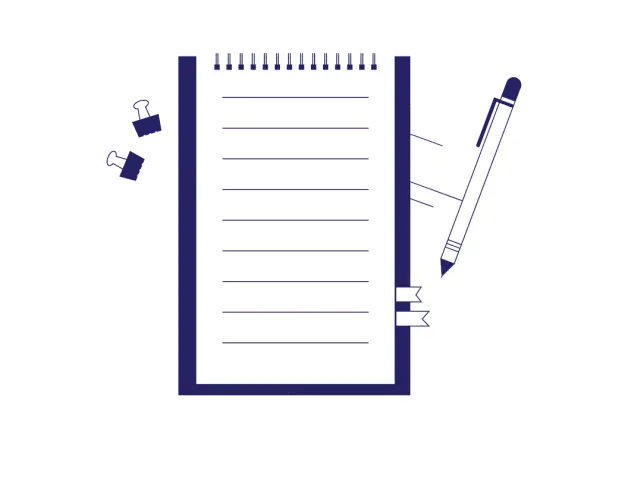
- 3-minute read
- 22nd August 2023
A rhetorical analysis essay is a type of academic writing that analyzes how authors use language, persuasion techniques , and other rhetorical strategies to communicate with their audience. In this post, we’ll review how to write a rhetorical analysis essay, including:
- Understanding the assignment guidelines
- Introducing your essay topic
- Examining the rhetorical strategies
- Summarizing your main points
Keep reading for a step-by-step guide to rhetorical analysis.
What Is a Rhetorical Strategy?
A rhetorical strategy is a deliberate approach or technique a writer uses to convey a message and/or persuade the audience. A rhetorical strategy typically involves using language, sentence structure, and tone/style to influence the audience to think a certain way or understand a specific point of view. Rhetorical strategies are especially common in advertisements, speeches, and political writing, but you can also find them in many other types of literature.
1. Understanding the Assignment Guidelines
Before you begin your rhetorical analysis essay, make sure you understand the assignment and guidelines. Typically, when writing a rhetorical analysis, you should approach the text objectively, focusing on the techniques the author uses rather than expressing your own opinions about the topic or summarizing the content. Thus, it’s essential to discuss the rhetorical methods used and then back up your analysis with evidence and quotations from the text.
2. Introducing Your Essay Topic
Introduce your essay by providing some context about the text you’re analyzing. Give a brief overview of the author, intended audience, and purpose of the writing. You should also clearly state your thesis , which is your main point or argument about how and why the author uses rhetorical strategies. Try to avoid going into detail on any points or diving into specific examples – the introduction should be concise, and you’ll be providing a much more in-depth analysis later in the text.
3. Examining the Rhetorical Strategies
In the body paragraphs, analyze the rhetorical strategies the author uses. Here are some common rhetorical strategies to include in your discussion:
● Ethos : Establishing trust between the writer and the audience by appealing to credibility and ethics
● Pathos : Appealing to the audience’s emotions and values
● Logos : Employing logic, reason, and evidence to appeal to the reader
Find this useful?
Subscribe to our newsletter and get writing tips from our editors straight to your inbox.
● Diction : Deliberately choosing specific language and vocabulary
● Syntax : Structuring and arranging sentences in certain ways
● Tone : Conveying attitude or mood in certain ways
● Literary Devices : Using metaphors, similes, analogies , repetition, etc.
Keep in mind that for a rhetorical analysis essay, you’re not usually required to find examples of all of the above rhetorical strategies. But for each one you do analyze, consider how it contributes to the author’s purpose, how it influences the audience, and what emotions or thoughts it could evoke in the reader.
4. Summarizing Your Main Points
In your conclusion , sum up the main points of your analysis and restate your thesis. Without introducing any new points (such as topics or ideas you haven’t already covered in the main body of your essay), summarize the overall impact that the author’s rhetorical strategies likely had on their intended audience.
Expert Proofreading Services
Ensure that your rhetorical analysis essay stands out by having our expert team proofread it. Send in your free sample of 500 words or less and see for yourself the difference in your work!
Share this article:
Post A New Comment
Got content that needs a quick turnaround? Let us polish your work. Explore our editorial business services.
5-minute read
Free Email Newsletter Template (2024)
Promoting a brand means sharing valuable insights to connect more deeply with your audience, and...
6-minute read
How to Write a Nonprofit Grant Proposal
If you’re seeking funding to support your charitable endeavors as a nonprofit organization, you’ll need...
9-minute read
How to Use Infographics to Boost Your Presentation
Is your content getting noticed? Capturing and maintaining an audience’s attention is a challenge when...
8-minute read
Why Interactive PDFs Are Better for Engagement
Are you looking to enhance engagement and captivate your audience through your professional documents? Interactive...
7-minute read
Seven Key Strategies for Voice Search Optimization
Voice search optimization is rapidly shaping the digital landscape, requiring content professionals to adapt their...
4-minute read
Five Creative Ways to Showcase Your Digital Portfolio
Are you a creative freelancer looking to make a lasting impression on potential clients or...

Make sure your writing is the best it can be with our expert English proofreading and editing.
- How it works

How to Write a Rhetorical Analysis Essay
Published by Grace Graffin at August 22nd, 2021 , Revised On August 22, 2023
“In a rhetorical analysis essay , the author analyses the text rhetorically. A rhetorical analysis essay exploits figures of speech to have a compelling or persuasive effect on the audience.”
This means that it looks at how the author says what they are saying rather than what they are saying. In a nutshell, a literary analysis essay explores the techniques, goals, and appeals to the readers.
The structure of a rhetorical analysis essay is similar to that of an argumentative essay . It starts by making a bold claim to hook the readers and present the thesis statement in the introduction section. The main body discusses the text, and the conclusion chapter wraps it all up.
This article explains the important conceptions of rhetorical writing and provides tips on writing a first-class rhetorical analysis essay.
The Key Concepts of Rhetoric
Rhetoric is the art of effective or persuasive writing, especially the exploitation of figures of speech and other compositional techniques to figure out how they are designed to persuade the readers. Here are a few important rhetoric concepts that you should know about.
Text and Context
When analysing text in terms of rhetoric, a text is not necessarily a piece of writing but a piece of information that needs to be analysed. This means that a text can be a piece of writing, an advertisement, a speech, or a sarcastic image.
So, in rhetoric, you will examine not only the language but also the visual components of the piece of information. Take into consideration all the elements surrounding the text, including the information about the author (or creator, designer, maker, etc.), the audience the text was developed for, and where, when, and why the text was developed.
Keeping these elements of the text in mind can help you produce an informed rhetorical analysis essay. For example, the iconic “I Have a Dream” speech from Martin Luther King, Jr.’s’ remains one of the most powerful and influential speeches. However, a person who doesn’t know the civil rights movements’ context will not understand its power.
Appeals: Logos, Ethos, Pathos
It is the appeals that enable the author to persuade the readers. The three rhetoric appeals, including logos, ethos, and pathos, were defined by famous philosopher Aristotle and referred to as the rhetoric triangle.
Logos , also known as logical appeal, is the most popular approach to making an argument in academic writing. In rhetoric, it refers to the use of reasoned arguments to convince the audience.
Ethos , also called the ethical appeal, is about the writer painting themselves as a subject expert. For example, if you are making an argument about the quality of distance education, then indicate your qualifications to show you are an expert in the field of education. Similarly, if you are arguing for the moral permissibility of after-birth abortion, then you could present yourself as a medical expert to enhance your authority and authenticity.
Pathos , also called the pathetic appeal, evokes the readers’ emotions of anger, love, sympathy, or hate. It involves the use of vivid imagery and emotional speaking to try to induce the audience’s emotions.
All three appeals are essential aspects of rhetoric. The author can use one or all three of them to persuade the readers.
Claims, Supports, and Warrants
Rhetoric always aims to express an argument, whether the readers must deduce one (e.g. from a sarcastic text) or the author clearly and logically defines one. The arguments involve claims, supports, and warrants.
A claim is a bold statement that the author expresses to grab the attention of the readers. The argument can be made out of one single claim or out of several. Claims are generally overtly specified, but they may also just be implied in some kinds of text.
Each claim needs support, which could be anything that enables the author to persuade the audience. These may appear in the form of hard evidence or responsive appeals.
Claims need support, and the warrant act as a bridge between them. A warrant takes the form of an assumption or logic. The warrant may not be stated outside the boundaries of formal argumentation – the author shoulders the readers will recognise the connection between the claim and the support. Still, it would help if you aimed to establish the implied warranty.
For example, consider the following rhetorical statement:
Rhetoric Statement
Both teams were missing their star performers; the crowd was not entertained.
We can see a claim and support in the above statement, but the warrant is not apparent. It is up to the readers to assume the warrant implied in the statement. For example, the warrant in the above statement assumes that the presence of star performers in the two teams would have entertained the crowd. Depending on the individual reader’s assumption, they may or may not be convinced by this argument.
Want to know what essay structure and style will work best for your assignment?
Problem fixed! We can write any type of essay in any referencing style. We ensure every essay written is beyond your expectations.

How to Analyse the Text?
The rhetoric analysis is all about reviewing the text in detail and raising questions to figure out the real meaning and aim behind it. Avoid selecting concepts in advance and applying them to the text. Here are some questions that you should ask:
- Who is the author of the text? What is their background?
- What is the purpose of the text?
- Did the author discuss a range of topics or focus solely on the key claims made in the text?
- Did the author use emotional appeals (sympathy, anger, love) to persuade the readers?
- What tone did they take? Formal or informal? Imposing or personal?
- Who was the targeted audience? Did the author successfully reach and convince their desired audience?
- What is the nature of the support provided by the author?
By finding answers to these questions, you can successfully establish the rhetorical devices used in the text. Rather than cramming in every rhetoric device you can think of – it would be appropriate to consider the ones that directly relate to the text.
You will find below information on how to write different parts of a rhetorical analysis.
How to Write the Introduction of your Rhetorical Analysis?
The introduction of a rhetoric analysis starts with a bold opening statement. It then provides background information pertaining to the text, such as what and who the text is for, and expresses the thesis statement.
Here is an example of a rhetoric analysis introduction.
You May Also Like
The paragraphs in the main body of an essay is where you develop the central argument. Here is all you need to know about how to write paragraph for essay.
No sure what are the types of persuasive essay? This article presents the similarities and differences between the most common types of persuasive essays.
Before diving into the how-to, grasping what critical discussion entails is essential. Essay writing help often emphasises the importance of this step. Critical discussion requires a deeper level of analysis where you explain a topic and evaluate and dissect its various facets.
USEFUL LINKS
LEARNING RESOURCES

COMPANY DETAILS

- How It Works
Home > Blog > Rhetorical Analysis Essay Examples and Best Practices
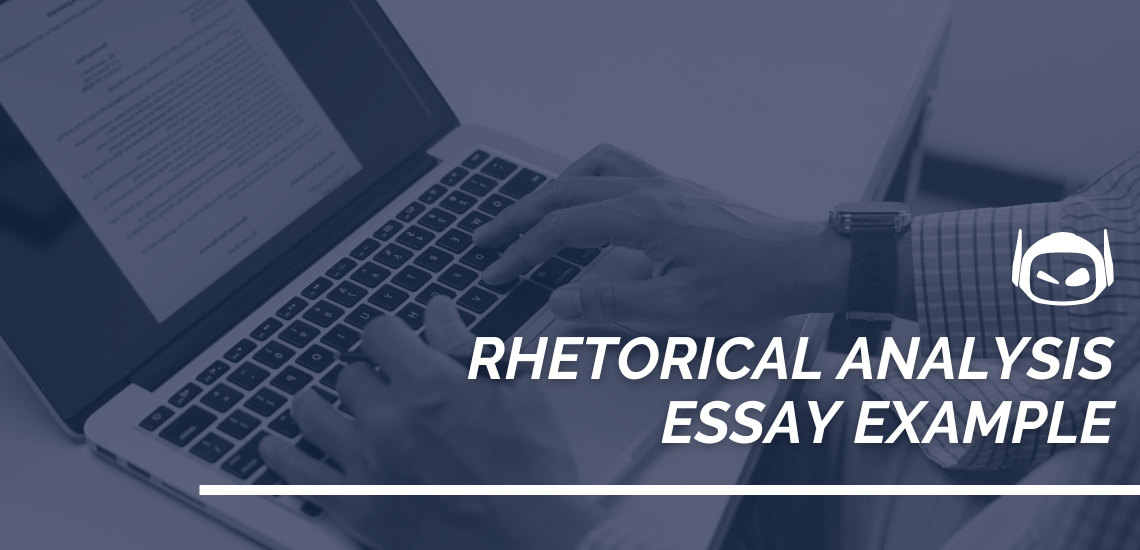
Rhetorical Analysis Essay Examples and Best Practices
- Smodin Editorial Team
- Updated: August 13, 2024
- General Guide About Content and Writing
Are you having trouble creating a high-quality rhetorical analysis essay? Then you’ll love the rhetorical analysis essay examples and best practices in this article. We’ll share the best ways to improve the quality of your content and get top marks with your assignment.
Let’s dive in!

What Is a Rhetorical Analysis Essay: Examples and Key Elements
A rhetorical analysis essay examines how authors or speakers use rhetoric to persuade, inform, or entertain their audience. It is not a persuasive essay . It involves breaking down a piece of communication, such as a speech, article, or advertisement. This helps you to understand the strategies employed to achieve its purpose.
Still want more details about what is a rhetorical analysis essay? No problem! The essay typically focuses on three primary elements, which are as follows:
- Ethos: Ethos refers to the credibility and character of the speaker or writer. You can use it to establish trust and authority. It helps convince the audience of the speaker’s reliability and expertise on the subject. Furthermore, you can convey ethos through the speaker’s qualifications, reputation, ethical behavior, and the use of credible sources.
- Pathos: Pathos appeals to the audience’s emotions. It aims to evoke feelings that will lead the audience to accept the speaker’s viewpoint. You can achieve this through storytelling, vivid imagery, emotionally charged language, and personal anecdotes. Also, pathos is effective in creating a connection with the audience and making the argument more relatable and impactful.
- Logos: Logos is the appeal to logic and reason. It involves the use of evidence, facts, statistics, and logical arguments to support a claim. Therefore, you can add a rhetorical analysis body paragraph about the extent of evidence the author provides.
To write a rhetorical analysis essay, one must first identify the purpose and audience of the text. Next, analyze the rhetorical strategies the author decided to use. This includes considering how effectively they contribute to the overall message. Also, examine the use of language, tone, imagery, and structure.
An Example of a Rhetorical Analysis
Let’s take Martin Luther King Jr’s speech, “I have a dream” as our rhetorical analysis example. The speech masterfully uses rhetorical strategies to inspire action for civil rights. Martin Luther King Jr establishes his credibility (ethos) by aligning with historical figures and documents, which enhances his moral authority.
Furthermore, he evokes strong emotions (pathos) through vivid imagery and the repetitive phrase “I have a dream.” This creates a hopeful vision for the future. Additionally, he employs logical arguments (logos) by highlighting broken promises and referencing American ideals of liberty and equality.
This blend of ethos, pathos, and logos makes his speech a powerful, and a call for justice and equality.

How to Write a Rhetorical Analysis Essay: Best Practices and Top Tips
Now, let’s look at some of the key rhetorical concepts to create an essay that will get you top marks. The idea is to use these best practices to save time and simplify the writing process. Also, they ensure you don’t miss out on important points that deliver on what you shared in the thesis statement.
So, consider the following if you want to know how to write a rhetorical analysis essay and what to include in each section of your essay.

Understand the Text
Thoroughly read and understand the text before you begin the analysis stage. After all, how can you create a rhetorical essay on a piece of literature you don’t fully understand? You may feel like saving time by skimming the content, but it will lead to an inaccurate and slower writing process.
You’ll need to identify the author’s purpose, audience, and the main argument. Additionally, take notes on key points, recurring themes, and the overall tone. Understanding the context in which the text was created is crucial for an accurate analysis. Hence, pay attention to the historical, cultural, and social factors.
Identify Rhetorical Strategies
Focus on the three primary rhetorical appeals, which are ethos, pathos, and logos. Make sure to analyze how the author uses these strategies to persuade the audience. Then look for specific examples, such as language choices, emotional anecdotes, or logical arguments that illustrate these techniques.
Organize Your Essay
Create a clear rhetorical analysis essay outline that includes an introduction, body paragraphs, and conclusion format . The rhetorical analysis introduction should present the text being analyzed and your thesis statement. Also, each body paragraph should focus on a specific rhetorical strategy or element by providing evidence and analysis.
You’ll need to create a rhetorical analysis conclusion by summarizing your main points and restating the significance of your analysis. Make sure you summarize the main points in a way that is easy to understand. Also, leave the reader with a few final thoughts you want them to take away from the academic writing.

Use Textual Evidence
Support your analysis with direct quotes and detailed examples from the text. When citing evidence, explain how it illustrates the rhetorical strategy being discussed and its effect on the audience. Additionally, ensure that each piece of evidence is relevant and strengthens your overall argument.
However, don’t add too many direct quotes since it can clutter the flow and feel of the essay. Instead, select a few quotes that allow you to convey the key concepts of the literature piece. Generally, it’s a good idea to focus on a few key concepts rather than covering many in a shallow fashion.
Proofread and Revise
Carefully proofread your essay for grammatical and structural errors. Also, ensure that your analysis is coherent and logically organized. Revising allows you to refine your arguments, improve clarity, and ensure that your essay effectively communicates your analysis.
Furthermore, you may want to use tools that help you proofread and write a good rhetorical analysis essay. They can help you with aspects of the writing process, such as creating a clear thesis statement and logical reasoning.

Contextual Analysis
You can place the text within its broader context. This means discussing the historical, cultural, or social background that influences the text. Also, understanding the context can provide deeper insights into the rhetorical choices made by the author and how they resonate with the audience.
Maintain an Analytical Tone
Write in an objective and analytical tone for the best results. Avoid summarizing the text and instead focus on analyzing how the rhetorical strategies contribute to the author’s purpose. You’ll need to be critical and insightful, which shows a deep understanding of the text’s rhetorical techniques and their impact.
Are you unsure of how to strike the right analytical tone? Then it’s a good idea to look at different examples to learn the best practices. For example, you can look at a rhetorical analysis introduction example to get going.

How To Start a Rhetorical Analysis Essay: Examples To Help You
Do you want to know how to start a rhetorical analysis essay? We’ll now cover the basics of how you can start to get the best results. This ensures that you hit the ground running and finish the project in time for the deadline.
Here’s the step-by-step process about how to start a rhetorical analysis essay with an example to show you how it’s done:
- Understand the purpose: The goal of a rhetorical analysis essay is to examine how an author or speaker uses rhetoric to persuade, inform, or entertain an audience. For example, in analyzing Martin Luther King Jr.’s “I have a dream” speech, you would explore how King used rhetorical strategies to advocate for civil rights and inspire action.
- Read and annotate the text: Carefully read the text you are analyzing. Also, annotate key passages and note examples of rhetorical devices such as ethos, pathos, logos, diction, syntax, and imagery. For instance, you might highlight King’s use of metaphors like “the manacles of segregation and the chains of discrimination.”
- Formulate a thesis statement: Develop a clear thesis that presents your main argument about how the text uses rhetoric. For example, Martin Luther King Jr. effectively uses ethos, pathos, and logos to inspire his audience to pursue racial equality.

How To Write a Rhetorical Analysis Essay: Factors To Consider
You may need to look at many different examples to craft the best essay for your assignment. This ensures that you can figure out what works to get top marks. However, you shouldn’t directly copy from the example you come across. Instead, use them for inspiration to write an essay with a great writing flow that’s unique.
Here are the top things to consider when looking at a rhetorical analysis essay:
- Thesis statement example: Pay attention to the thesis statement example to better understand the type of issues you may need to address. This allows you to craft your own statement, which makes for a good topic to tackle.
- Analytical depth: Evaluate the depth of analysis in explaining how rhetorical strategies contribute to the text’s purpose. That’s because a strong essay goes beyond surface-level observations to provide insightful commentary on the effectiveness of these strategies.
- Logical organization: Check for a clear and logical structure, with each paragraph focusing on a specific aspect of the analysis. The organization should help guide the reader through the argument in a coherent and systematic way. You can emulate this organizational structure to improve the readability of your own essay.
- Conclusive summary: Look for a strong conclusion that summarizes the main points and reiterates the significance of the analysis. Furthermore, the conclusion should tie together the essay’s arguments and reflect on the overall impact of the rhetorical strategies.
AP Lang Rhetorical Analysis Essay Example
To write an AP Lang rhetorical analysis essay, start by carefully reading the text and identifying the author’s purpose, audience, and main argument. You’ll need to begin your essay with an introduction that includes the title, author, and context of the text. Also, don’t forget about the clear thesis statement.
In the body paragraphs, focus on specific rhetorical strategies such as ethos, pathos, and logos. you’ll also need to focus on using ethos, pathos, and logos, which we covered above.
Maintain an objective and analytical tone throughout your essay. You can achieve this by organizing your paragraphs logically, with each focusing on a different strategy or element.
Finally, conclude by summarizing your main points and reiterating the significance of the rhetorical strategies in achieving the author’s purpose. Make sure to proofread your essay for clarity and coherence to ensure a polished final piece. If you are unsure of how to structure your essay, you can always check out AP Lang rhetorical analysis essay examples online .
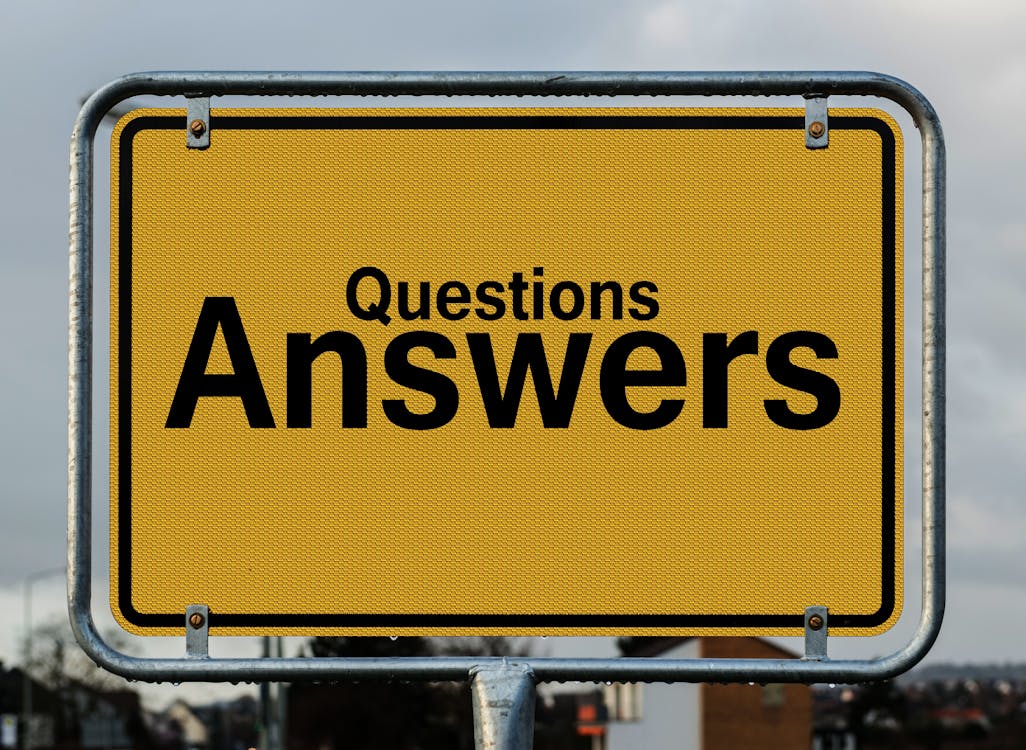
Frequently Asked Questions
What should i include in a rhetorical analysis essay introduction.
The introduction to the rhetorical analysis essay should provide background information on the text. This includes the author, title, and context. Also, it should present the purpose of the rhetorical analysis and your thesis statement.
Make sure that the thesis briefly mentions the main rhetorical strategies you will discuss to guide the reader on what to expect in the essay body. You’ll get better at doing this with practice and keep it brief.
How do I analyze ethos in a rhetorical analysis essay?
To analyze ethos in a rhetorical analysis essay, you need to evaluate how the author establishes credibility and authority. Look for references to their qualifications, experience, or reputation. Additionally, consider the tone and language used to build trust and rapport with the audience.
Discuss how these elements contribute to the overall persuasiveness of the text, which means you’ll need to read it in detail. It’s handy to make notes with regard to ethos evaluation as you work on the project.
How do I analyze logos in a rhetorical analysis essay?
To analyze logos in a rhetorical analysis essay, focus on the logical structure and evidence presented in the text. Also, identify examples of facts, statistics, logical arguments, and reasoning used to support the author’s claims.
You’ll also need to evaluate the clarity and coherence of these arguments and how they contribute to the overall persuasiveness of the text. This latter part is more tricky and takes practice before you can get it right.
What are common mistakes to avoid when writing a rhetorical analysis essay?
Common mistakes to avoid when writing a rhetorical analysis essay include summarizing the text instead of analyzing it. This is not the point of the content, and you need to avoid doing this since it can result in a low grade.
Furthermore, you need to avoid neglecting to support claims with evidence and failing to address the effectiveness of rhetorical strategies. Also, avoid focusing too much on one type of appeal (ethos, pathos, or logos) to the detriment of others.
Can I use a first-person perspective in a rhetorical analysis essay?
While rhetorical analysis essays are typically written in the third person to maintain an objective tone, there are instances where a first-person perspective might be appropriate. However, it is essential to use it sparingly and ensure that the focus remains on the text and its rhetorical strategies.
You may want to look at a rhetorical analysis essay example that uses the first person to learn. You can use your findings to improve the quality of your essay and make sure you strike the right balance.

Use Smodin AI To Write Your Rhetorical Analysis Essay
The best practices in this article will help you create a high-quality rhetorical analysis essay. Therefore, you can get top marks in your class or improve on your personal best. You’ll see that there’s a method to the madness, such as following the right structure.
Now that you know how to write a rhetorical analysis essay, you can begin the process. Make sure that you remember the rules about ethos, logos, and pathos to write the best content. This will also help you craft the introduction, body paragraphs, and conclusion sections.
Do you still need help with your visual rhetorical analysis essay? Then you can use Smodin AI to improve the overall quality of your essay. The tool can proofread your work or help generate text that meets your exact requirements.
So what are you waiting for? Give Smodin AI a try today and craft top-quality essays!
Rhetorical Analysis Essay
Rhetorical Analysis Essay Example

Top 15+ Rhetorical Analysis Essay Examples for Students
Published on: Mar 10, 2023
Last updated on: Jan 29, 2024

People also read
How To Write A Rhetorical Analysis Essay That Stands Out
Rhetorical Analysis Essay Topics & Ideas for Students
Rhetorical Analysis Essay Outline - Tips & Examples
Understanding Ethos, Pathos, Logos - The Three Rhetorical Appeals
Share this article
Writing a rhetorical analysis essay can be tough. You want to engage your reader, but you also need to provide clear and concise analysis of the text.
It's hard to know where to start, what information is important, and how to make your argument clear.
Don't fret! We've got you covered.
In this blog post, we'll give you 15+ Rhetorical analysis essay examples to help you craft a winning essay. Plus, we'll give you some tips on how to make your essay stand out.
So without a further delay, let's start!
On This Page On This Page -->
Good Rhetorical Analysis Essay Examples
Examples help the readers to understand things in a better way. They also help a writer to compose an essay just like professionals.
Here are some amazing rhetorical analysis examples on different topics. Use them as a helping hand to understand the concept and write a good essay.
Rhetorical Analysis Essay Example: AP Language
Rhetorical analysis done in AP Language and Composition is one of the biggest tasks a student can ever get. On the same hand, drafting it in a proper way is also necessary to get good grades.
Look at these rhetorical analysis essay example AP language given below to see how a well-written rhetorical essay is written.
AP Rhetorical analysis essay example
Rhetorical Analysis Essay Example Ap Lang 2020
Rhetorical Analysis Essay Example Ap Lang 2021
Rhetorical Analysis Essay Example AP Lang 2022
Rhetorical Analysis Essay Example AP Lang 2023
These rhetorical analysis essay example college board will help you to win over your panel in no time!
Want to start from the basics? Head over to our Rhetorical essay guide to solidify your base.
Rhetorical Analysis Essay Example: Ted Talk
A rhetorical analysis can be done on nearly anything. Here is a good example of a rhetorical essay in which a ted talk is being analyzed.
Rhetorical Analysis Essay Example: Ethos, Pathos, Logos
The first impression of these three terms sounds just like a conjuration in some kind of a magical story. But in fact, these elements of persuasion were created by Aristotle and have been used for a very long time.
According to Aristotle, they were the primary persuasive strategies that authors should use in their papers. These elements are further elaborated as follows:
- The ethos appeals to ethics.
- Pathos appeals to emotions.
- Logos mean the use of rational thinking.
Here is an example of a rhetorical essay written using these elements.
Understand Ethos,Pathos and Logos to write a compelling essay.
Rhetorical Analysis Essay Example for College
College students often get to write a rhetorical analysis essay. They find it hard to write such an essay because it is a bit more technical than other essay types.
Here is an example of a well-written rhetorical essay for college students.
Comparative Rhetorical Analysis Essay Example
A rhetorical analysis essay can be written to show a comparison between two objects. Here is a compare-and-contrast rhetorical analysis essay example.

Paper Due? Why Suffer? That's our Job!
Visual Rhetorical Analysis Essay Example
The visual rhetorical essay determines how pictures and images communicate messages and persuade the audience. Usually, visual rhetorical essays are written for advertisements. They use strong images to convince the audience to behave in a certain way.
Visual Rhetorical Analysis Essay Example Pdf
Rhetorical Analysis Essay Example: Letter from Birmingham Jail
Here is another good example of a rhetorical essay. Most of us know about the history of âletter from a Birmingham jailâ. Read the given example to see how rhetorical analysis is done on it.
Struggling for a similar good topic? Check out our amazing rhetorical essay topics to select the perfect theme for your essay.
Great Influenza: Rhetorical Analysis Essay Example
Influenza has been one of the scariest pandemics the world has faced in history. Here is a rhetorical essay on great influenza.
Great influenza: Rhetorical Analysis Essay Example
Condoleezza Rice Rhetorical Analysis Essay Example
The speech given by Condoleezza Rice has become a classic example of effective oratory. Here is an example of a rhetorical analysis essay on the speech given by Condoleezza Rice at a commencement ceremony.
Rhetorical Analysis Essay Example: Condoleezza Riceâs Commencement Speech
This example explores the effectiveness of Rice's speech and features an in-depth analysis.
Rhetorical Analysis Essay Example High School
High school essays involve the analysis of different texts and the application of rhetorical tools to those texts. Here is an example that focuses on a high school essay about the effects of television on society.
Rhetorical Analysis Essay Example (Pdf)
Rhetorical Analysis Essay Example MLA
MLA format is one of the most commonly used formats for essays. Here is an example of a rhetorical essay written in MLA format that focuses on the effectiveness of advertisements.
MLA Rhetorical Analysis Essay PDF
Rhetorical Analysis Essay Example Outline
Outline helps to organize the ideas and arguments that you want to present in your essay. Here is a sample outline that can help you write an effective rhetorical analysis essay.
Rhetorical Analysis Essay Example Outline sample
Hop on to our rhetorical essay outline guide to learn the step-by-step process of crafting an exemplary outline.
How to Start a Rhetorical Analysis Essay Example
When starting a rhetorical analysis essay, it is important to provide a brief overview of the topic that you are analyzing. This should include the overall message being conveyed, the target audience and the rhetorical devices used in the text.
Here is a rhetorical analysis introduction example for your ease.
David Suzuki's "The Right Stuff" holds a captivating and enlightening style that we have grown accustomed to from the renowned broadcaster of The Nature Of Things. He commences with an intriguing thought, taken from Is There Life After High School?, that âimpressions created in high school are more enduring than those formed at any other time." Undoubtedly, this is something many can relate to. |
Thesis Statement Example for Rhetorical Analysis Essay
The thesis statement of a rhetorical analysis essay should explain the primary argument being made in the text. Here is an example of a thesis statement for a rhetorical analysis essay for your ease.
Example of Rhetorical Analysis Thesis Statement
Rhetorical Analysis Essay Example Conclusion
The conclusion of a rhetorical analysis essay is an important part of the overall essay. It should summarize your main points and provide some final thoughts on the topic.
Here is an example of conclusion for a rhetorical analysis essay for your ease.
Suzuki's essay may overlook the overwhelming question of logistics, which is how can schoolsâburdened by limited staff and resourcesâadd the formidable subject of sex education to their curriculum? Granted, David Suzuki wrote his essay during a time when educational budgets were in better shape than they are today. Nevertheless, he establishes an salient point that teachers should value their students and present information that captivates their attention. |
Download this Rhetorical Analysis Essay Writing Manual to help gather all the relevant guidance for your rhetorical essay.
Rhetorical Analysis Essay Writing Manual (PDF)
Watch this video to understand how to select Rhetorical analysis essay evidences.
Rhetorical Analysis Essay Writing Tips
To write a rhetorical analysis essay, you must have good writing skills. Writing a rhetorical essay is a technical task to do. This is why many students find it really difficult.
There are the following things that you should do to write a good rhetorical analysis essay. Those important things are as follows:
- Determine the Rhetorical Strategy
To write a rhetorical essay, the writer needs to follow a specific method for research. The typical research methods used for this particular essay are as follows:
- Choose a Topic
For any essay type, it is very important to have a good topic. A good topic seeks the readers of attention and convinces them to read the complete essay.
- Create a Rhetorical Analysis Outline
An outline is an essential part of essay writing. The outline provides a definite structure to the essay and also guides the reader throughout the essay. A rhetorical analysis outline has the following elements in it:
- Introduction
- Body paragraphs
These three elements let you describe the entire idea of your rhetorical analysis essay. These three elements are further written with the help of sub-elements.
- Develop a Thesis Statement
The thesis statement is yet another important part of essay writing. It is the essence of the entire essay. It may be a sentence or two explaining the whole idea of your essay. However, not give background information about the topic.
- Proofread and Edit
The formal terminology used for essay revision is known as proofreading. To make sure that your essay is error-free, repeat this process more than once.
Now let's wrap up , shall we?
So far we have provided you with the best rhetorical analysis examples that are sure to win over your panel. With our help, you can surely sfe guard your academic success journey in no time!
In case you think you can not write such an essay on your own, consult an essay writing service.
At CollegeEssay.org , we provide the best rhetorical analysis essay writing service to every student. We have an extensive team of professional writers who can handle all your essay writing assignments.
We make sure that the content we provide you is 100% unique and help you get the best grade.
So why delay when our essay writer can provide you with a top-notch rhetorical essay right away?
Hire our essay service and avail yourself 50% OFF on your first order today!
Frequently Asked Questions
What are the 3 parts of rhetorical analysis.
The three parts of rhetorical analysis are:
- Ethos
- Logos
- Pathos
What are the elements of a rhetorical analysis?
The main elements of a rhetorical analysis essay are:
- Situation
- Audience
- Purpose
- Medium
- Context
Is there any difference between AP lang rhetorical analysis essay example 2020 and AP lang rhetorical analysis essay example 2021?
Yes, there are differences between 2020 and 2021 AP Language and Composition rhetorical analysis essay examples.
- In 2020 the essay prompts revolved around various social issues related to public discourse. In 2021 they mainly focused on the ideas of justice or progress.
- In 2020 students were encouraged to write a multi-paragraph essay shifting back and forth between creative devices of rhetoric. While in 2021 more emphasis was placed on analyzing how well an author's argument is structured.
Cathy A. (Literature, Marketing)
For more than five years now, Cathy has been one of our most hardworking authors on the platform. With a Masters degree in mass communication, she knows the ins and outs of professional writing. Clients often leave her glowing reviews for being an amazing writer who takes her work very seriously.
Paper Due? Why Suffer? That’s our Job!

Keep reading

Legal & Policies
- Privacy Policy
- Cookies Policy
- Terms of Use
- Refunds & Cancellations
- Our Writers
- Success Stories
- Our Guarantees
- Affiliate Program
- Referral Program
- AI Essay Writer
Disclaimer: All client orders are completed by our team of highly qualified human writers. The essays and papers provided by us are not to be used for submission but rather as learning models only.

Rhetorical Analysis Essay
Rhetorical analysis essay generator.

Students and people need to know how to analyze and break down other people’s speeches and non-fiction works, books , advertisements , and brochures . One can apply the scientific method to dissect the various structures, elements , and characteristics of one’s work. A student or an academic can do this through a rhetorical analysis essay.
1. Rhetorical Analysis Essay Example
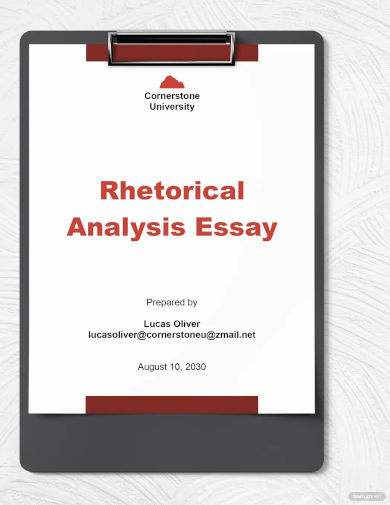
- Google Docs
2. Rhetorical Analysis Thesis Statement Essay Example

Size: 342 KB
3. Rhetorical Analysis of a Speech Essay Example
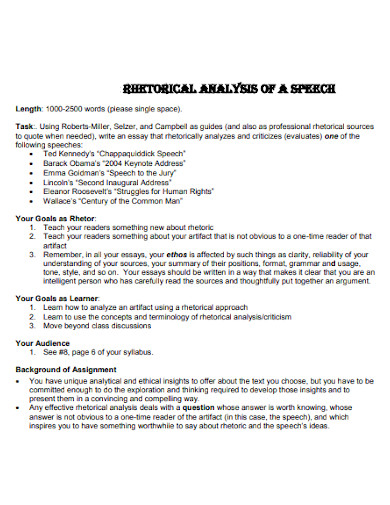
Size: 610 KB
4. Critical Rhetorical Analysis Essay Example
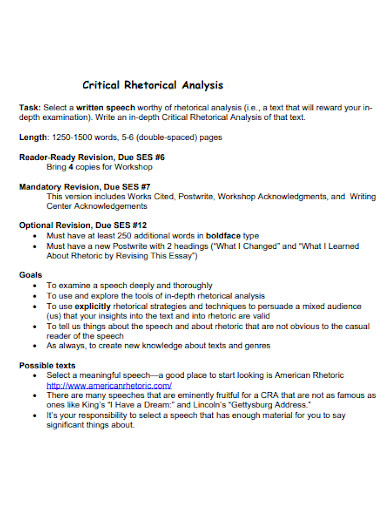
Size: 74 KB
5. Structure of Rhetorical Analysis Essay Example
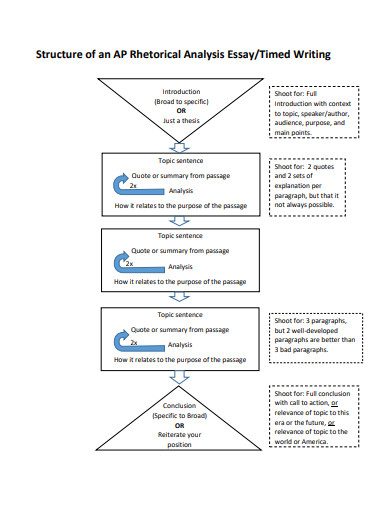
Size: 315 KB
6. Editable Rhetorical Analysis Essay Example

Size: 133 KB
7. Organizing Rhetorical Analysis Essay Example
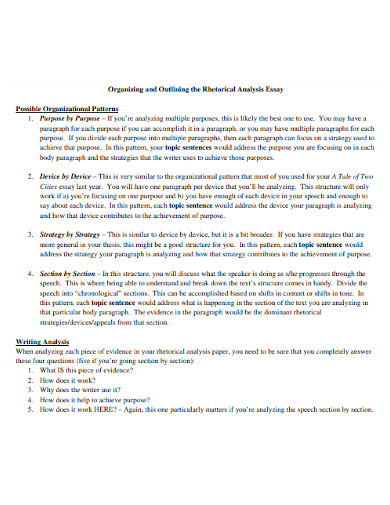
Size: 23 KB
8. Rhetorical Analysis Essay Outline Example
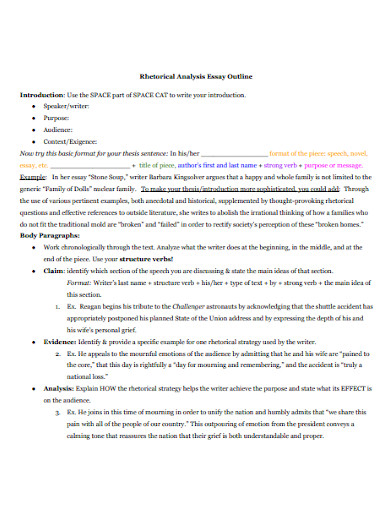
Size: 60 KB
9. Rhetorical Analysis Essay Conclusion Example
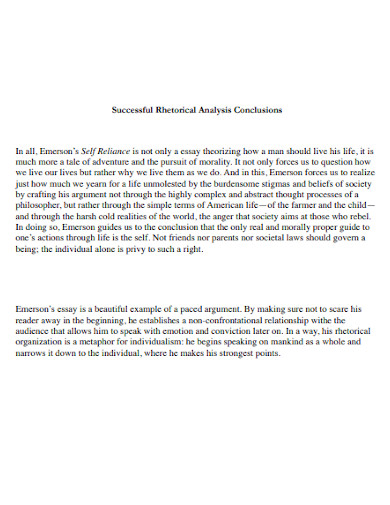
Size: 45 KB
10. Printable Rhetorical Analysis Essay Example

Size: 182 KB
111. Sample Rhetorical Analysis Essay Example
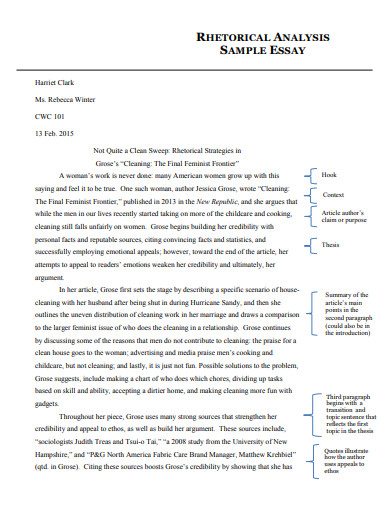
Size: 341 KB
12. Rhetorical Analysis Essay Assignment Example
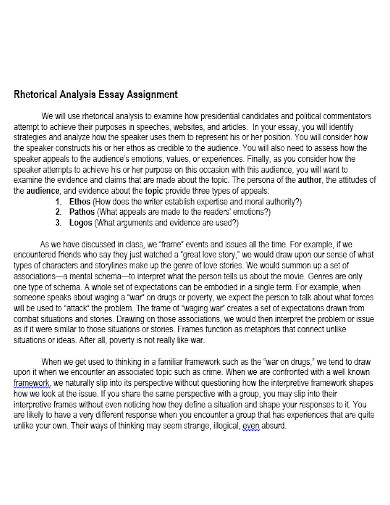
Size: 93 KB
13. AP English Rhetorical Analysis Essay Example
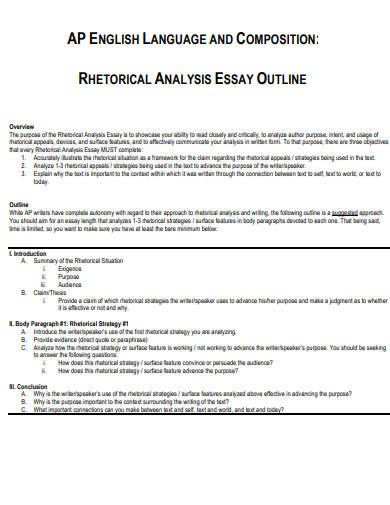
Size: 53 KB
14. College Rhetorical Analysis Essay Example
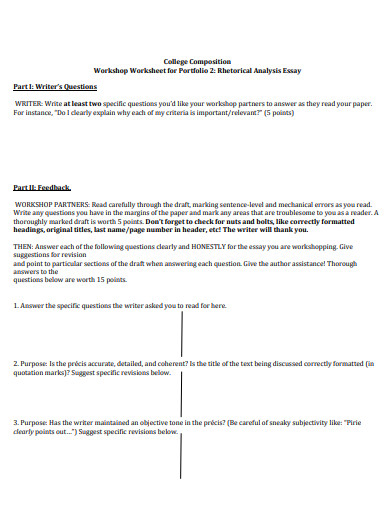
Size: 311 KB
15. Rhetorical Analysis Essay Advertisement Example
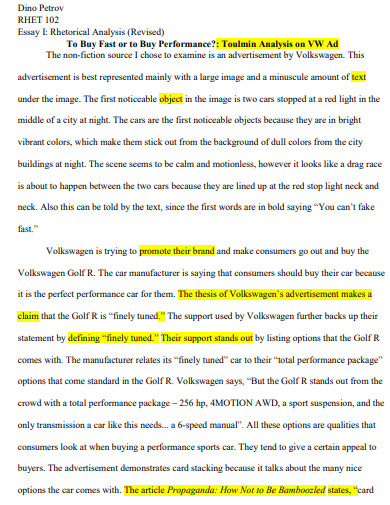
Size: 316 KB
16. Rhetorical Analysis Essay MLA Format
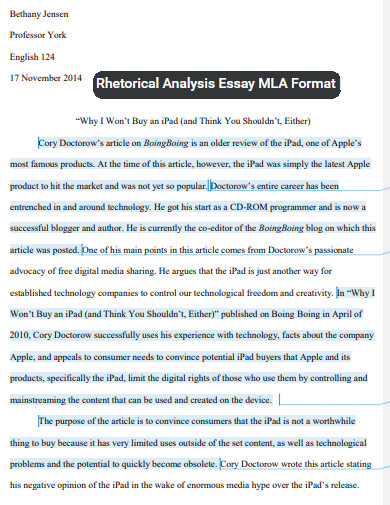
Size: 108 KB
17. Rhetorical Analysis Essay Ethos Example
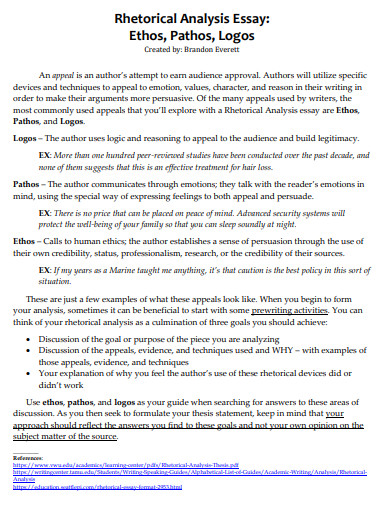
Size: 544 KB
18. Writing a Rhetorical Analysis Essay Example
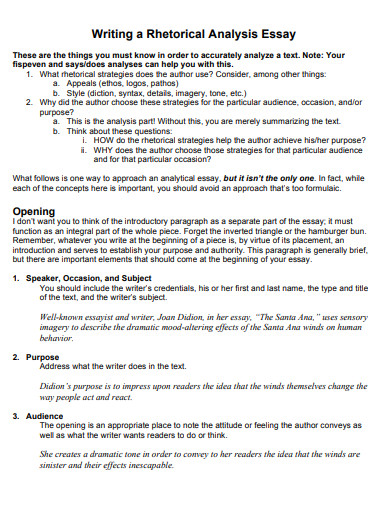
Size: 227 KB
19. Simple Rhetorical Analysis Essay Example
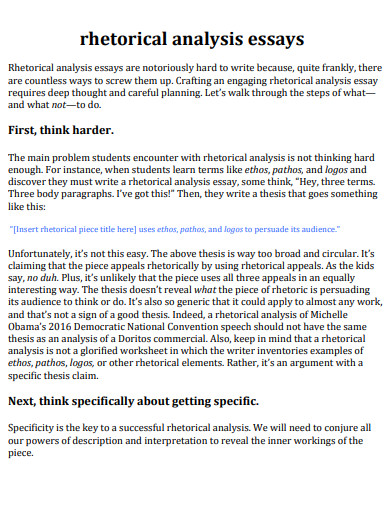
20. Rhetorical Analysis Essay Format
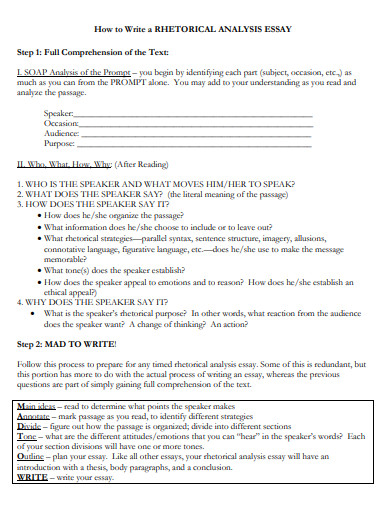
Size: 303 KB
21. Commercial Rhetorical Analysis Essay Example
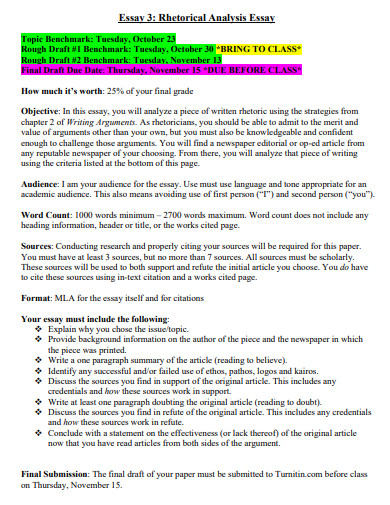
Size: 19 KB
22. Draft Rhetorical Analysis Essay Example
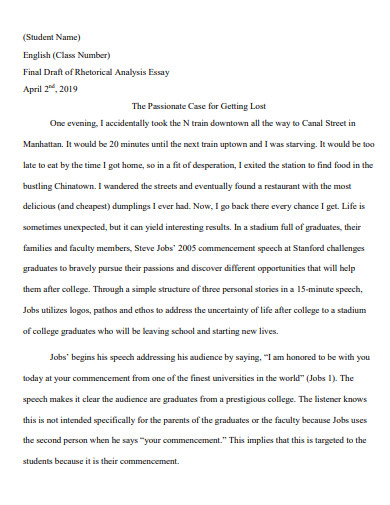
Size: 194 KB
23. Pathos Rhetorical Analysis Essay Example

Size: 437 KB
24. Basic Rhetorical Analysis Essay Example
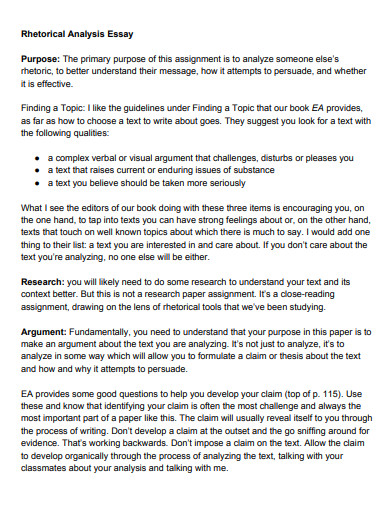
Size: 112 KB
25. General Rhetorical Analysis Essay Example
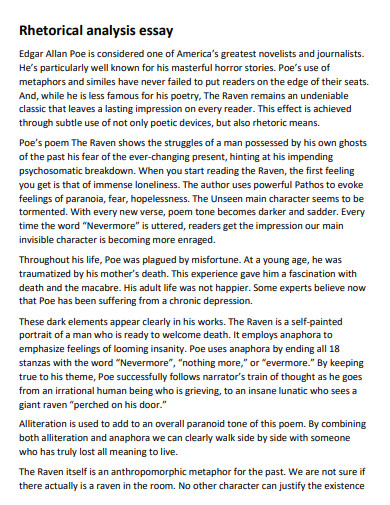
Size: 82 KB
26. Formal Rhetorical Analysis Essay Example
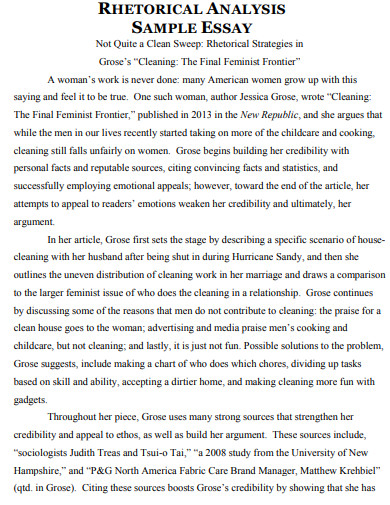
27. Rhetorical Analysis Essay Paper Example
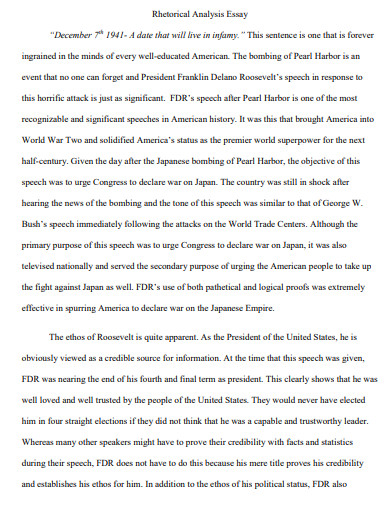
Size: 35 KB
28. Rhetorical Analysis Paragraphs and Essay Example
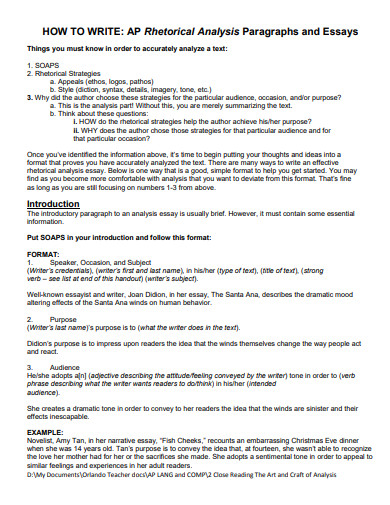
Size: 241 KB
29. Rhetorical Analysis of Examination Essay Example

30. Standard Rhetorical Analysis Essay Example
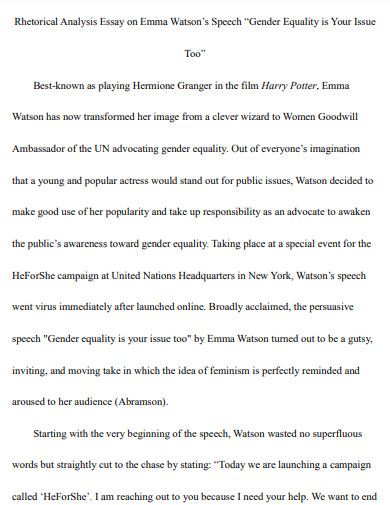
Size: 224 KB
31. Rhetorical Analysis Essay Rubric Example

What Is Rhetorical Analysis Essay?
A rhetorical analysis essay is a type of essay one can write about which will dissect and explore the various contexts , themes , and tones of a non-fiction work or speech and determine the objective , goal, and effect it has on the audience. The essay can also establish various relationships between the rhetorical devices the person uses in their non-fiction work.
How to Write a Rhetorical Analysis Essay
A rhetorical analysis essay is essentially a deep dive into the various rhetorical aspects of a non-fiction work or speech. If one rhetorical analysis essay samples, examples, templates, and articles to act as a reference, then one can use the links in the sections above.
Step 1: Obtain a Recording Or Transcript of the Speech
Before you can write a rhetorical analysis essay, you must either obtain a recording, transcript, or the text of the non-fiction work you will write the essay on. This is important, as the rhetorical analysis essay will require a speech or text to dissect and read through.
Step 2: Outline the Rhetorical Analysis Essay You Will Write
After you have obtained the text or speech you will analyze in the essay, you must now provide an outline , outline format , or format for your rhetorical analysis essay. The outline will help provide a structure for your rhetorical analysis essay and keep an essential pace that will help you communicate your thoughts to the audience without any room for misunderstanding or misinterpretation.
Step 3: Make or Write the Rhetorical Analysis Essay
When you have finished working on the outline, you must now make or write the rhetorical analysis essay properly. You must ensure that there is a logical progression to your essay, which means that you must have a proper introduction, body, and conclusion .
Step 4: Evaluate the Contents of One’s Essay and Edit Accordingly
After you have finished writing your essay, you must evaluate all the contents of the essay. You can also opt to have someone proofread the contents of your essay and determine whether or not you can get your point across.
Why is it important to analyze speeches?
People contribute to our shared knowledge of rhetorics and speaking by analyzing and studying the various effects and attributes of people’s speeches and non-fiction work. Therefore, it is important to know and analyze the various aspects of successful and unsuccessful speeches as they can contribute to the world’s shared knowledge of rhetoric.
What are the elements of a rhetorical analysis essay?
A good rhetorical analysis essay incorporates the proper essay structure of having a good introduction paragraph, a body, and a concluding paragraph. Like most essays, the writer needs to understand the topic and have a basic understanding of the themes surrounding the subject of rhetoric.
What is the main difference between a rhetorical analysis essay and a normal essay?
A rhetorical analysis essay is not that different from a normal essay, which means both texts have the same fundamental parts and structure. The main difference between the two types of essays is in the topic, function, and analysis present in the body of the essay. A rhetorical analysis essay focuses on the writer’s analysis of a specific speech or text.
The rhetorical analysis essay is a subtype of essay that specifically focuses on the person’s objective interpretation of a specific non-fiction text or speech. A good rhetorical analysis essay allows the reader to understand the various effects speeches can have on their listeners or readers.
Text prompt
- Instructive
- Professional
Analyze the use of ethos, pathos, and logos in a famous speech for your Rhetorical Analysis Essay.
Discuss the rhetorical strategies used in a successful advertising campaign in your Rhetorical Analysis Essay.
Rhetorical Analysis
Sample rhetorical analysis essay.
Student essay is used with permission. It was originally submitted double-spaced with no extra spaces between the lines, featured proper MLA pagination, and 1/2″ paragraph indents. The writing assignment asks for an argument about how several rhetorical elements work together to create a functioning whole in a given chapter of Michael Shermer’s 2004 book The Science of Good and Evil: Why People Cheat, Gossip, Care, Share, and Follow the Golden Rule .
Liana Monnat
English 101
Instructor: Joshua Dickinson
October 16, 2016
Michael Shermer Successfully Proves That Humans Can Be Good Without God
In his chapter entitled “Can We Be Good Without God?” Michael Shermer’s objective is to prove that one does not need to be religious to be capable of moral behavior. Shermer has, in his previous four chapters, taken care to establish ethos by demonstrating that he is an open-minded and intelligent fellow. Judging by his use of vocabulary, he assumes his readers are also intelligent people, with whom he attempts to develop a connection through his intermittent use of humor. Shermer has already proved that his arguments are well-supported by large quantities of evidence, which lets his audience know that what he is saying is inherently trustworthy. Taking all of this into consideration and having carefully analyzed this chapter, the reader is compelled by logic to agree with Shermer that one can have religion without morality, and morality without religion.
Shermer begins his fifth chapter with an appeal to pathos. He describes to readers the massacre perpetrated at Columbine High School by Eric Harris and Dylan Klebold (141). His description of the event along with a photograph of the black-clad, angry-looking murderers gives the reader a glimpse of the terror that must have been experienced by those unfortunate enough to have been present at the massacre. In building up to proving his argument, Shermer appeals to readers’ ability to reason by showing that outside influences do not cause a person to behave immorally. He explains that in the aftermath of the event, many theories were put forth to rationalize the cause of Harris and Klebold’s murderous rampage. Included in these causes were use of prescription drugs, cult or gang influence, a fatherless home, homosexuality, and exposure to violence in video games (143-144). Shermer uses logic to point out that none of these causes were relevant, particularly the idea that video game violence may have been the cause. He makes mention of several newspapers that make such a claim, but dismisses the articles as having been written by “wannabe social commentators” and “ad hoc social scientists” and lacking in evidence (143). Shermer shows how ridiculous the notion of video games being the causal factor is by relaying testimony of other players of violent games. They all point out that they have not been driven to violence by their gaming habits (143). By presenting these testimonies, he appeals to our common sense and ability to reason as intelligent individuals to realize that if video games caused people to behave violently, all gamers who played violent games would exhibit violent behavior, which is certainly not the case. Shermer has thus far proved to readers that outside influences do not cause a person to abandon their morality.
Having logically dismantled the previous cases, Shermer turns his focus to the subject of gun control. He quips that those in favor of more gun control took advantage of the Columbine massacre by “squawking for more legislation” (146). His use of the word ‘squawking’ brings chickens to mind, and the great amount of noise they produce at the slightest provocation. I believe creating this visual was probably the intent behind his humorous choice of words.
Liberal gun control advocates thoroughly ridiculed, Shermer notes that conservatives answered the call for more gun control by insisting that guns were not the problem. The problem, as conservatives saw it, was the evil souls of the people who used them to commit evil deeds (146). I feel that Shermer purposefully saved mentioning the gun control issue for last because it deals with the ideas of evil, morality, and religion. He has taken much care in the preceding chapters to make it clear that he does not believe that evil exists, and that morality is not a product of religion. The issue of gun control seems a well-chosen topic from which to begin his argument of how morality is a thing separate from religion.
The first example of evidence Shermer offers in his argument is an excerpt from a letter read by Congressman Tom DeLay. He uses the excerpt to bring to readers’ attention an argument that is commonly made to explain violent acts. It implies that as science provides evidence for questions that people once looked to religion to answer, people no longer feel obligated by a higher power to behave morally (147). Shermer disputes this argument by describing the case of another perpetrator of a school shooting. Rumors of the perpetrator being an atheist were quickly dispelled by the family priest, whose explanation was that the boy was a sinner but not an atheist, to which Shermer sarcastically quips “Thank God for that” (147). This remark demonstrates his disgust that the priest would imply that being a Christian murderer was less offensive than being an atheist. With this evidence, Shermer has supported his argument and demonstrated to his audience that religious people do not necessarily have morals.
For Shermer’s next move, he takes into consideration the opinions of several credible people who believe that morality is impossible without religion. He utilizes quotes from the 103rd archbishop of Canterbury, Pope Pious XI, and the deeply religious Dostoyevsky who all fervently insist that religion is absolutely necessary for morality (149-150). Shermer then includes the religious views of Laura Schlessinger, his one-time colleague. He immediately diminishes her religious credibility by referring to her as a “self-appointed religious authority” (150). This implies to readers that although she is considered a ‘religious authority’ her opinions should not be taken too seriously. He points out that although Schlessinger claims to have grown up lacking morals due to an atheistic upbringing, she admits that her parents still managed to instill her with some degree of morality (151). This admission helps support his idea that non-religious people can have morals, but is the only part of Shermer’s paragraphs about Schlessinger that appear to be relevant to his argument. He continues on about her, however, and it becomes apparent to readers that Shermer once admired her work but was taken aback by her conversion to Judaism. He further weakens her authority by poking fun at her, and readers (this reader, at least) cannot help but wonder if he only included these paragraphs about Schlessinger because he is still disgruntled about her defection from his cause.
Shermer has, through several quotes from religious authorities, demonstrated to his audience that religious people are adamant that religion is necessary for moral behavior. In an effort to prove that they are wrong, he refutes the claims of these authorities by serving up examples of religious people that committed atrocities while zealously practicing their religion. His go-to example is Hitler and the annihilation of the Jews in Germany. He illustrates for readers the religious fervor of Hitler by quoting him as saying “I believe today that I am acting in the sense of the Almighty Creator. By warding off the Jews I am fighting for the Lord’s work” (qtd. on 153). By strategically using this quote, Shermer is proving to readers that not only did Hitler commit mass murder, he did so in the Lord’s name. This example, more than any other, is meant to show that religion and morality are not related.
In perhaps his most convincing argument that one need not be religious to behave morally, Shermer gets personal. He asks readers the question “What would you do if there was no God?” (154). Now the reader must contemplate the point Shermer has been trying to make, but on an intimate level. He forces one to admit that if it was learned that God did not exist, the vast majority of people would continue to behave morally. Most people would not, free from fear of eternal reprisal, proceed to pillage, rape, and commit murder. After this degree of self-examination, it would be illogical to disagree that morality is not a creation of religion.
In his chapter “Can We Be Good Without God?”, Shermer successfully proves that we can indeed be good without God. He appealed to readers’ emotions by describing the nightmare that was the Columbine massacre and led his audience to logically conclude that no outside influences caused the perpetrators’ behavior. Through the strategic use of quotes and examples, Shermer effectively demonstrated that contrary to the beliefs of religious authorities, deeply religious people are capable of behaving extremely immorally. Shermer ingeniously substantiated his point by asking readers to ponder what their own behavior might be like without God holding them accountable for their actions. I feel that this was his most convincing piece of evidence in support of his argument, it is hard to deny his logic when applying it to oneself. It can be assumed that most readers would continue to behave morally, and would agree with Shermer that we can be good without God.
Shermer, Michael. “Can We Be Good Without God?” The Science of Good and Evil: Why People Cheat,
Gossip, Care, Share, and Follow the Golden Rule. Henry Holt and Company, LLC, 2004, pp.141-156.
- Sample Rhetorical Analysis Essay (MLA Format). Authored by : Liana Monnat. Provided by : Jefferson Community College. Located at : http://www.sunyjefferson.edu . Project : ENG 101. License : CC BY-SA: Attribution-ShareAlike
- How to Order
Rhetorical Analysis Essay
Rhetorical Analysis Essay Outline
Crafting an Effective Rhetorical Analysis Essay Outline - Free Samples!
10 min read
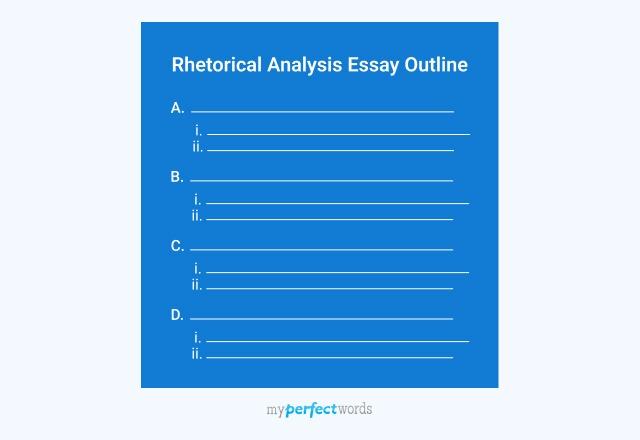
People also read
Rhetorical Analysis Essay - A Complete Guide With Examples
320+ Best Rhetorical Analysis Essay Topics
Rhetorical Analysis Essay Example - Free Samples
Ethos, Pathos, and Logos - Structure, Usage & Examples
Staring at a blank page, unsure how to begin your rhetorical analysis essay? You're not alone. Many students struggle with the first step: creating an outline.
Without a clear plan, your essay can quickly become disorganized. But don't worry, we're here to help.
In this blog, we'll show you how to craft a solid rhetorical analysis essay outline. By the end, you'll know exactly how to structure your outline.
Keep reading to tackle those blank pages with confidence!
- 1. What Is A Rhetorical Analysis Essay?
- 2. Why Create a Rhetorical Analysis Essay Outline?
- 3. Components of a Rhetorical Analysis Outline
- 4. Steps to Create a Rhetorical Analysis Essay Outline
- 5. Rhetorical Analysis Essay Outline Examples
What Is A Rhetorical Analysis Essay?
A rhetorical analysis essay is a type of analytical essay that examines how an author uses language and persuasion to get their message across.
It involves analyzing speeches or essays to understand how authors use strategies within the rhetorical triangle to influence their intended audience. These techniques usually involve logical appeal, moral argument, and vivid imagery that appeals to the listener.
Key Elements to Analyze
In a rhetorical analysis essay, you would be analyzing the text keeping these key rhetorical concepts in mind:
- Ethos: This concerns the credibility of the author or speaker.
- Logos: This focuses on the logical aspects of the argument.
- Pathos: Pathos explores the emotional appeal of the discourse.
- Style and Tone: This involves analyzing the author's writing style and the overall tone of the text.
- Context: Looks at the historical, cultural, and social background of the text.
These elements provide a structured approach to rhetorical analysis, revealing how effective communication is achieved.
Why Create a Rhetorical Analysis Essay Outline?
Writing a rhetorical analysis essay requires a writer to draft a structured piece of writing.
Apart from conducting a strong analysis, a rhetorical analysis essay depends on how perfectly the essay outline is drafted.
An outline organizes the raw information and makes it understandable for the readers. It serves as your compass, ensuring you stay on course throughout the rhetoric essay. It helps you structure your ideas and arguments, adding clarity to your essay writing process.
Moreover, an outline works as a checklist for your essay. It assures you that nothing important is missed in the content.
Components of a Rhetorical Analysis Outline
Now that we've explored why creating an essay outline is essential, it's important to explore the different components of a rhetorical analysis outline.
Here’s a detailed rhetorical analysis essay outline:
|
Each element plays a crucial role in crafting a well-structured and persuasive analysis, so let's explore them in detail:
Introduction
The introduction of your rhetorical analysis essay serves as the gateway to your analysis. It's where you captivate your reader's interest, provide essential background information, and present your thesis statement.
Here are the elements typically included in an introduction paragraph:
- Hook The " hook " is a sentence or two designed to grab the reader's attention. It could be a thought-provoking quote, a surprising fact, or a compelling question. The purpose is to make your reader interested in what you're about to discuss—how an author uses rhetorical devices.
- Background Information After the hook, provide some context. Here, you briefly introduce the text you're analyzing, the author or speaker, and the overall topic. It's like giving your reader a map to navigate through your analysis.
- Thesis Statement The thesis statement is the main argument, your "claim." This concise sentence outlines what you'll be analyzing and what your main points will be. Your thesis should tell the reader what to expect in your analysis.
The body of your essay is where you dissect the author's persuasive techniques and reveal their impact on the audience. It contains sections dedicated to each rhetorical strategy you're examining.
In these sections, you'll explain the strategies, provide evidence from the text, and offer your insightful analysis of their effectiveness.
Section for Each Rhetorical Strategy
In the body paragraphs , you'll have sections dedicated to each rhetorical strategy you're analyzing. These sections each will focus on a different aspect of the text. For each strategy, you'll do three things:
- Explanation of the Strategy Start by explaining what the rhetorical technique is. Define it clearly for your reader. This is like providing a dictionary definition.
- Examples from the Text Next, provide examples from the text you're analyzing. These are specific quotes or passages where the author or speaker uses the strategy you're discussing. It's like showing your reader the evidence.
- Analysis of the Effectiveness Finally, analyze how effective the strategy is. This is where you dive deep into the text and explain how and why the strategy persuades the audience.
The conclusion should leave your readers with a sense of closure and a clear understanding of your analysis.
You don't introduce new information or arguments in this section; instead, you tie everything together. Here are the three essential elements of an impactful essay conclusion:
- Restate Thesis Start by restating your thesis to remind readers of your main argument. Repeating your main argument clearly helps the reader tie in all they have read in your essay.
- Summarize Main Points Summarize the main points from each section of your analysis. This serves as a reminder of the highlights of your arguments made throughout the essay.
- Final Thoughts Conclude by sharing your thoughts on how the author's strategies affect the audience and the text's broader importance. Encourage readers to consider these strategies' impact and the text's relevance.
This structure in your rhetorical analysis outline ensures that your analysis is clear, well-organized, and persuasive. Each component plays a crucial role in guiding your reader through your analysis.
Steps to Create a Rhetorical Analysis Essay Outline
Creating an essay outline is a crucial step in organizing your thoughts and effectively analyzing a piece of rhetoric. Here’s how to write an rhetorical analysis essay outline:
Step 1 - Choose the Text
Select the piece of rhetoric that you will be analyzing. It could be a speech, a written essay, an advertisement, a political campaign, or any other form of communication.
Step 2 - Identify Rhetorical Devices and Rhetorical Appeals
Look for rhetorical devices such as metaphor, simile, analogy, hyperbole, and alliteration. Analyze how these devices contribute to the message. Identify any repetition, parallelism, or rhetorical questions used in the text.
Moreover, look for common rhetorical appeals i,e., ethos, pathos, and logos .
Step 3 - Analyze Appeals and Strategies in Each Section
For each argument, dedicate a body paragraph that will analyze how the author/speaker uses ethos, pathos, and logos.
Note the specific rhetorical devices used in each section and their impact.
Step 4 - Consider the Effect on the Audience
While outlining the last body paragraph, add points that analyze how the appeals are intended to affect the audience.
Consider whether the author/speaker is trying to persuade, inform, entertain, or provoke a specific emotional response. Include specific examples and quotations from the text to support your analysis.
Step 5 - Filter Out Extra Information
It's important to know what parts of the arguments should be included and which should be filtered out.
After having a sketch of the introduction and body paragraphs, remove any information that might feel irrelevant.
Step 6 - Conclude and Summarize
For the ending, make sure to restate your thesis statement. Include points that directly support your arguments and sum up your analysis.
These steps help you plan your essay for a well-structured, clear, and cohesive essay.
Here's a sample rhetorical analysis essay outline template that analyzes ethos, pathos and logos :
|
Here’s a practice outline:
Rhetorical Analysis Essay Outline Fill In The Blanks
Rhetorical Analysis Essay Outline Examples
Here are some rhetorical analysis essay outline pdf that you can use as reference outlines:
Rhetorical Analysis Essay Outline Ethos Pathos Logos
Visual Rhetorical Analysis Essay Outline
Comparative Rhetorical Analysis Essay Outline
Rhetorical Analysis Essay Introduction Outline
AP Lang Rhetorical Analysis Essay Outline Examples
Writing a rhetorical analysis essay is a common requirement for AP English and Composition students. It helps structure your thoughts and ensures a coherent argument.
Here are some examples for help:
Rhetorical Analysis Essay Structure AP Lang
AP English Rhetorical Analysis Essay Outline
AP Language and Composition Rhetorical Analysis Essay Outline
Need more help getting started? Check out these expert rhetorical analysis essay examples to get inspired!
In conclusion, you've got the tools and examples you need to ace your rhetorical analysis essay. The steps we've gone through provide a strong starting point for your academic journey into analyzing persuasive writing.
But if you ever hit a wall or need help with tight deadlines, don't forget our experts are here to lend a helping hand. Our essay writing service for college has helped lots of students like you get top-notch essays.
So, why wait? Place your order now and set yourself up for academic success!
Frequently Asked Questions
How do you write a rhetorical analysis outline.
To write a rhetorical analysis outline, start by identifying the main components: introduction, summary of the text, analysis of rhetorical strategies, and conclusion. Outline each section with key points, such as the author’s purpose, audience, and the effectiveness of rhetorical devices used.
What are the 5 points of a rhetorical analysis?
The five key points of a rhetorical analysis are:
1) Purpose: What is the author trying to achieve? 2) Audience: Who is the intended audience? 3) Context: What is the situation or background? 4) Ethos, Pathos, Logos: How are credibility, emotion, and logic used? 5) Effectiveness: How successful is the author in achieving their purpose?

Write Essay Within 60 Seconds!

Nova Allison is a Digital Content Strategist with over eight years of experience. Nova has also worked as a technical and scientific writer. She is majorly involved in developing and reviewing online content plans that engage and resonate with audiences. Nova has a passion for writing that engages and informs her readers.

Paper Due? Why Suffer? That’s our Job!
Keep reading

Pardon Our Interruption
As you were browsing something about your browser made us think you were a bot. There are a few reasons this might happen:
- You've disabled JavaScript in your web browser.
- You're a power user moving through this website with super-human speed.
- You've disabled cookies in your web browser.
- A third-party browser plugin, such as Ghostery or NoScript, is preventing JavaScript from running. Additional information is available in this support article .
To regain access, please make sure that cookies and JavaScript are enabled before reloading the page.

COMMENTS
For example, a rhetorical analysis essay written by Lee Jennings on"The Right Stuff" by David Suzuki. Lee started the essay by providing the introduction in the following way: David Suzuki's "The Right Stuff" features a gracious, entertaining, and informative style. We associate with this well-known host of The Nature of Things.
Rhetorical Analysis Sample Essay. Harriet Clark. Ms. Rebecca Winter. CWC 101. 13 Feb. 2015. Not Quite a Clean Sweep: Rhetorical Strategies in. Grose's "Cleaning: The Final Feminist Frontier". A woman's work is never done: many American women grow up with this saying and feel it to be true. 1 One such woman, author Jessica Grose, wrote ...
Learn how to analyze a text in terms of rhetoric, such as appeals, claims, supports, and warrants. See examples of rhetorical analysis essays and tips on structure, context, and language.
Rhetorical appeal #2: Pathos. The purpose of Pathos-driven rhetoric is to appeal to the reader's emotions. A common example of pathos as a rhetorical means is adverts by charities that try to make you donate money to a "good cause". To evoke the intended emotions in the reader, an author may use passionate language, tell personal stories ...
Learn how to analyze and evaluate a text based on its rhetoric, using ethos, pathos, and logos. Follow the 6 steps and the outline example to write your own rhetorical analysis essay.
Learn what rhetorical analysis means, how to structure your essay, and how to use the three rhetorical strategies and five rhetorical situations. See examples of great rhetorical analysis essays and get tips on planning and writing.
Like all other essays, your rhetorical analysis essay will have an introduction with a thesis, body paragraphs, and a conclusion. WRITE - write your essay. Asher AP ELAC Name: _____ Step 3: Organizing and Writing Your Essay: Some of this is redundant, but this breaks down some of the steps from MAD TO WRITE even further. ...
The AP Lang Rhetorical Analysis Essay is one of three essays included in the written portion of the AP English Exam. The full AP English Exam is 3 hours and 15 minutes long, with the first 60 minutes dedicated to multiple-choice questions. Once you complete the multiple-choice section, you move on to three equally weighted essays that ask you ...
2. Introducing Your Essay Topic. Introduce your essay by providing some context about the text you're analyzing. Give a brief overview of the author, intended audience, and purpose of the writing. You should also clearly state your thesis, which is your main point or argument about how and why the author uses rhetorical strategies.
How to Write a Rhetorical Analysis Essay in 6 Steps. In a rhetorical analysis essay, a writer will examine the rhetoric and style of another author's work. If you want to write your own rhetorical analysis essay, we've developed a step-by-step guide to lead you through the process. In a rhetorical analysis essay, a writer will examine the ...
Rhetoric being the study of persuasion, a rhetorical analysis is an essay that analyzes and evaluates how well a text communicates its message. It recognizes the rhetorical elements in the text and then examines how each contributes to the author's intended purpose. The subject of analysis is the way the text is written and not its message or ...
Rhetorical Analysis. Rhetoric is the study of how writers and speakers use words to influence an audience. A rhetorical analysis is an essay that breaks a work of non-fiction into parts and then explains how the parts work together to create a certain effect—whether to persuade, entertain or inform. You can also conduct a rhetorical analysis ...
A rhetorical analysis essay exploits figures of speech to have a compelling or persuasive effect on the audience." This means that it looks at how the author says what they are saying rather than what they are saying. In a nutshell, a literary analysis essay explores the techniques, goals, and appeals to the readers.
RHETORICAL ANALYSIS SAMPLE ESSAY. 13 Feb. 2015 Not Quite a Clean Sweep: Rhetorical Strategies in Grose's "Cleaning: The Final Feminist Frontier" A woman's work is never done: many American women grow up with this saying and feel it to be true. One such woman, author Jessica Grose, wrote "Cleaning: The Final Feminist Frontier ...
writer's position/issue, or explaining the issue. Instead, you are analyzing how the writer i. s in Creating a Rhetorical AnalysisPa. 1: AnalyzePick your text and read it thoroughly. Determine the speaker, audience, purpose, & genre.The spea. er refers to the first and last name of the writer. If the writer has credentials that len.
What Is a Rhetorical Analysis Essay: Examples and Key Elements. A rhetorical analysis essay examines how authors or speakers use rhetoric to persuade, inform, or entertain their audience. It is not a persuasive essay. It involves breaking down a piece of communication, such as a speech, article, or advertisement.
Rhetorical Analysis Essay Example: Ethos, Pathos, Logos. The first impression of these three terms sounds just like a conjuration in some kind of a magical story. But in fact, these elements of persuasion were created by Aristotle and have been used for a very long time.
Learn what a rhetorical analysis essay is. Learn how to write a rhetorical analysis essay and get an example of a rhetorical analysis essay outline.
Rhetorical Analysis Essay: Ethos, Pathos, Logos Created by: Brandon Everett Summer 2019 An appeal is an author's attempt to earn audience approval. Authors will utilize specific ... and techniques used and WHY - with examples of those appeals, evidence, and techniques Your explanation of why you feel the author's use of these rhetorical ...
Step 2: Outline the Rhetorical Analysis Essay You Will Write. After you have obtained the text or speech you will analyze in the essay, you must now provide an outline, outline format, or format for your rhetorical analysis essay. The outline will help provide a structure for your rhetorical analysis essay and keep an essential pace that will help you communicate your thoughts to the audience ...
Sample Rhetorical Analysis Essay. Student essay is used with permission. It was originally submitted double-spaced with no extra spaces between the lines, featured proper MLA pagination, and 1/2″ paragraph indents. The writing assignment asks for an argument about how several rhetorical elements work together to create a functioning whole in ...
Key Elements to Analyze. In a rhetorical analysis essay, you would be analyzing the text keeping these key rhetorical concepts in mind: Ethos: This concerns the credibility of the author or speaker. Logos: This focuses on the logical aspects of the argument. Pathos: Pathos explores the emotional appeal of the discourse.
A strong thesis statement for a rhetorical analysis is NOT… A simple statement of your topic A broad statement A statement of facts or statistics A summary of the author's essay you are analyzing A statement of what you're going to do in the essay Examples of weak rhetorical analysis thesis statements:
Ad Analysis Essay Example Crafting an essay on the topic of "Ad Analysis Essay Example" can be a challenging endeavor that requires a unique blend of analytical skills, critical thinking, and creative expression. The difficulty arises from the need to dissect and analyze advertisements effectively, considering various elements such as visual appeal, language use, and underlying messages.